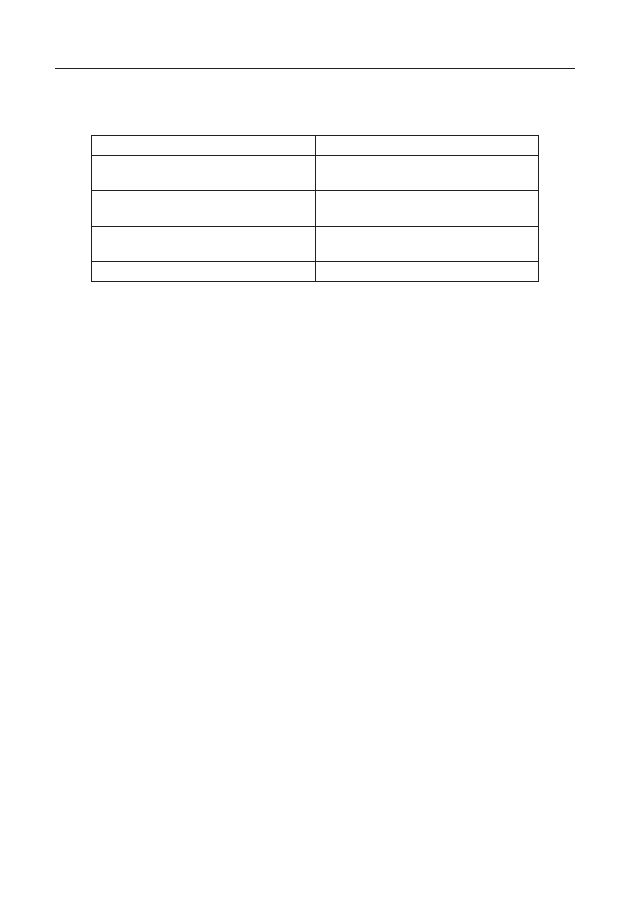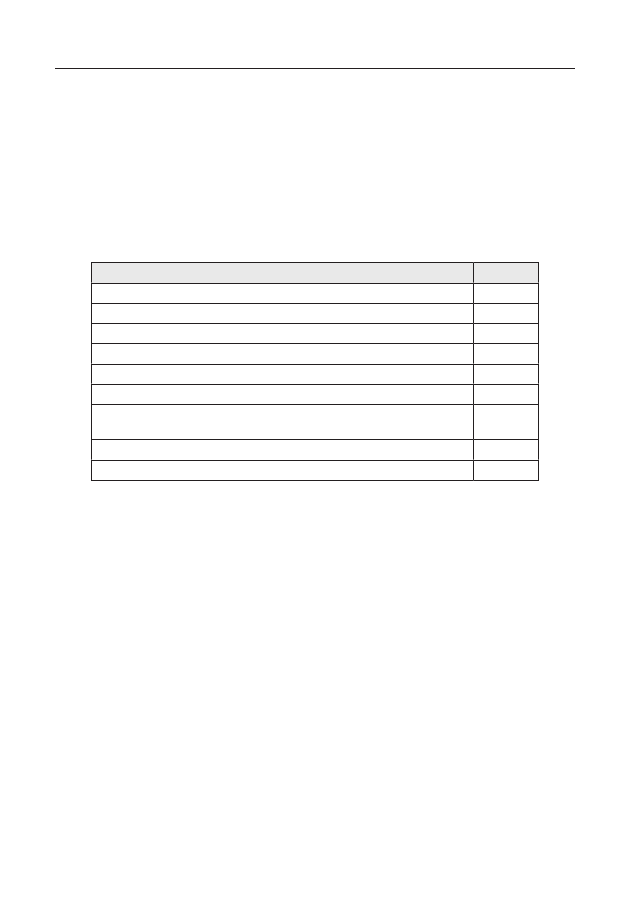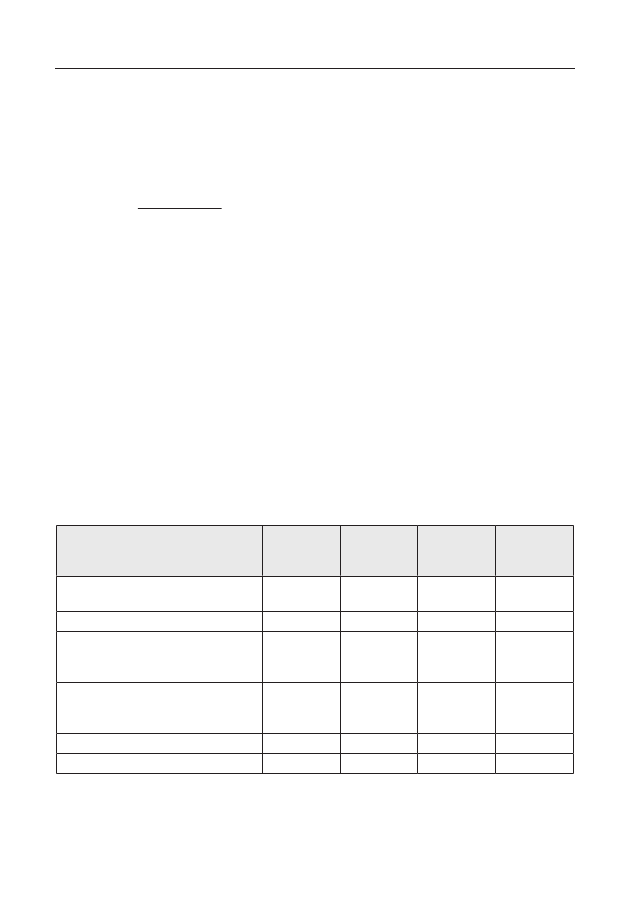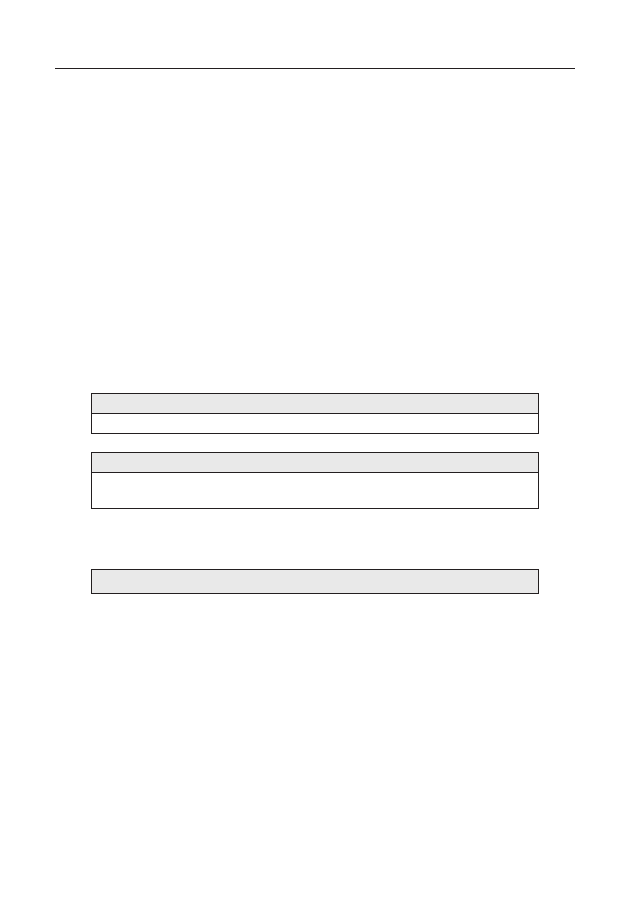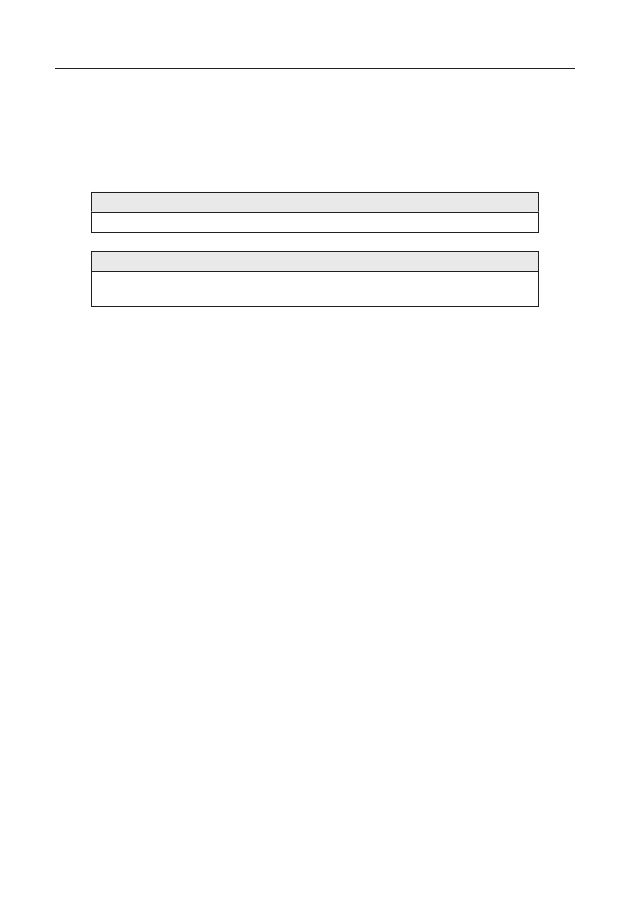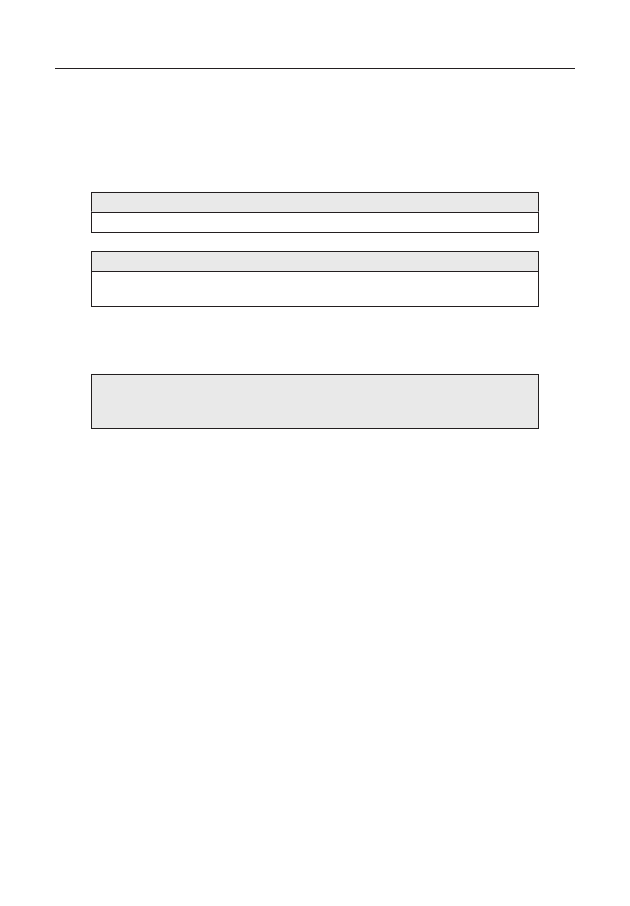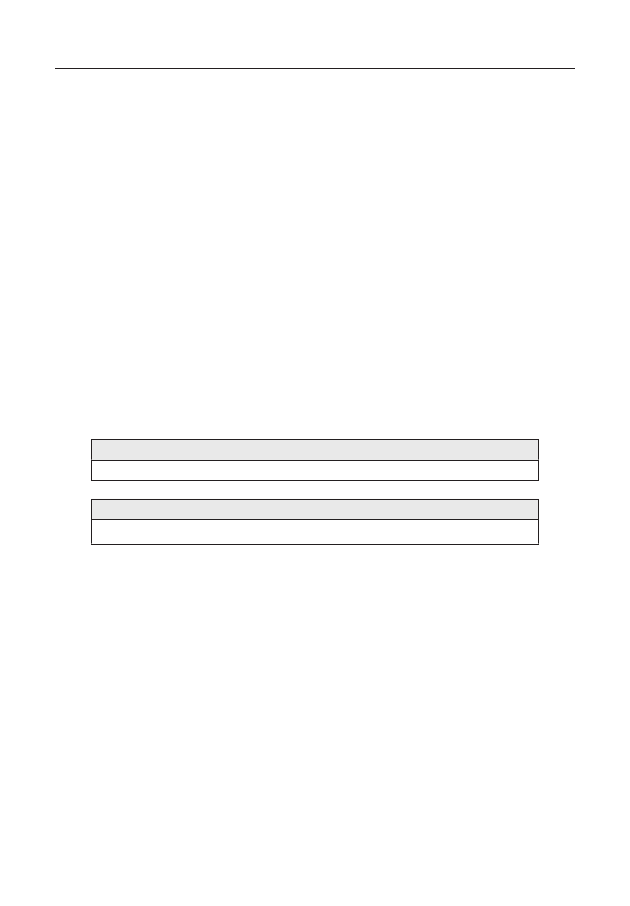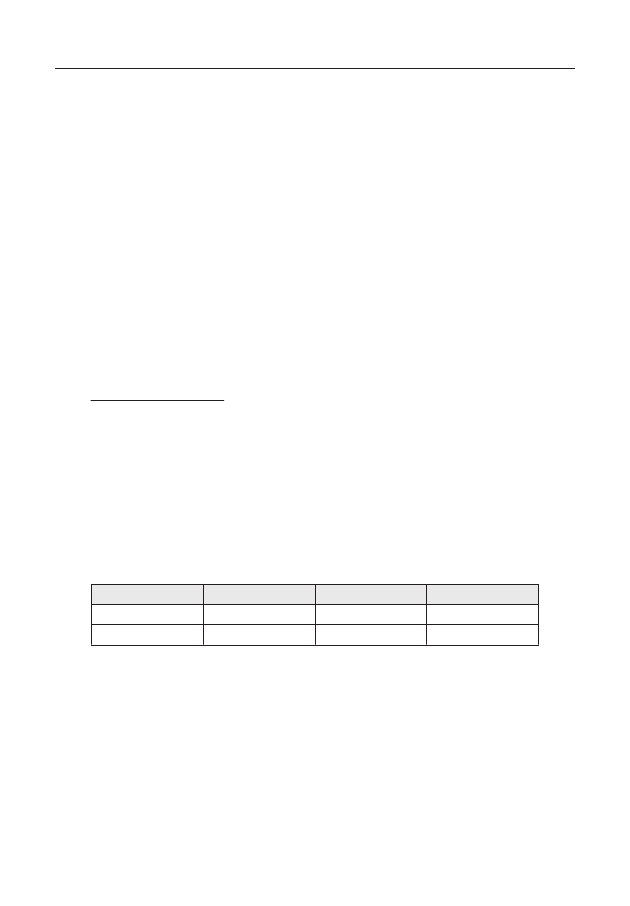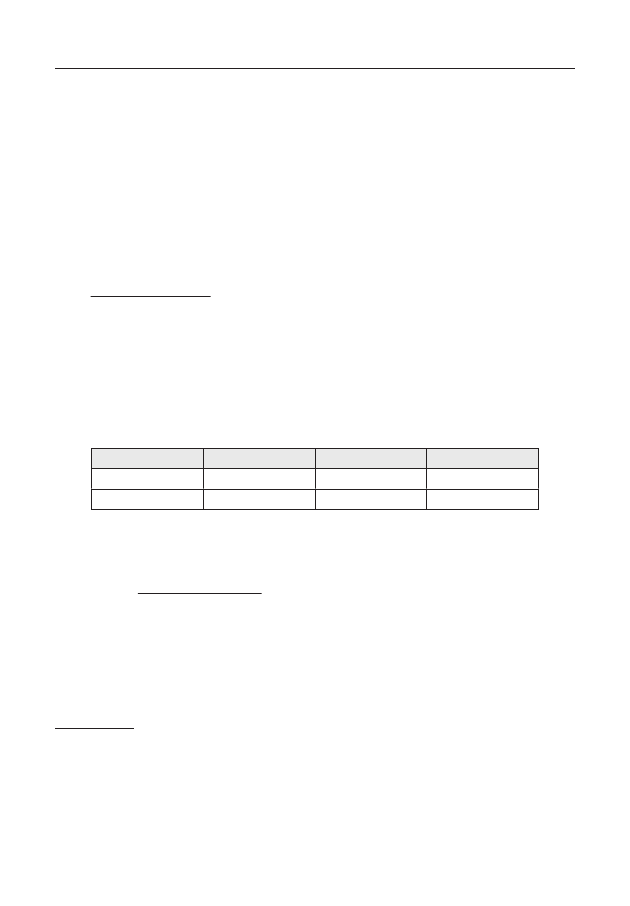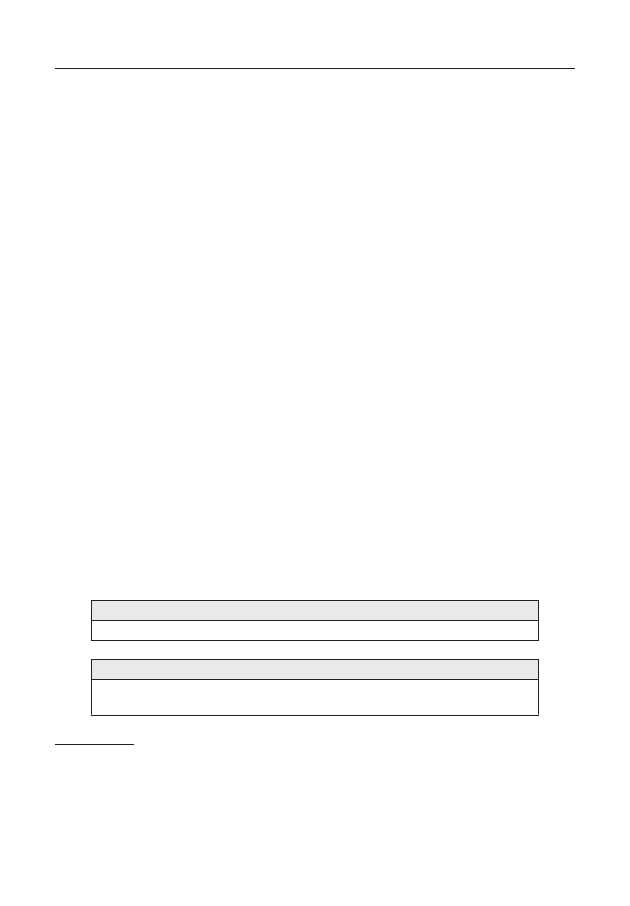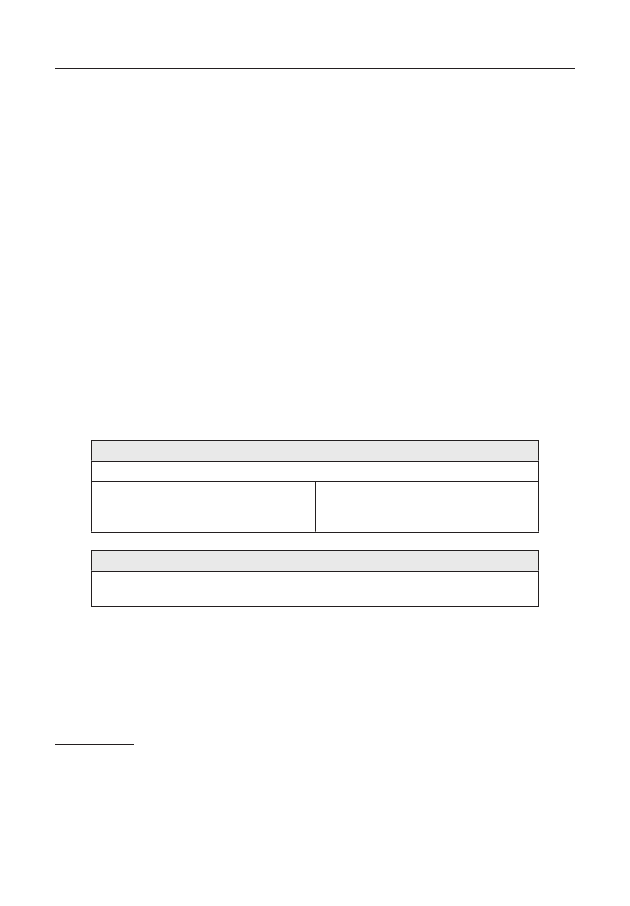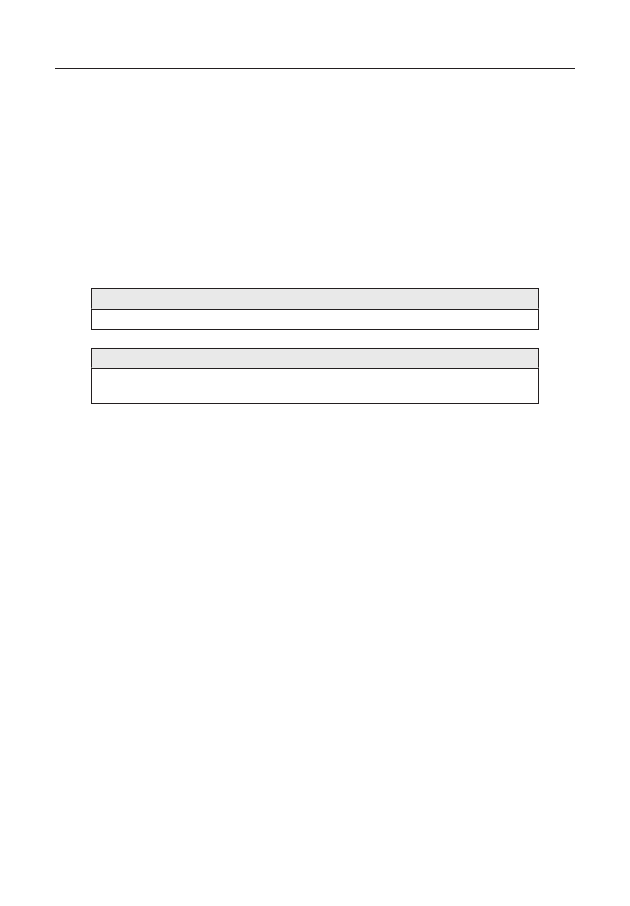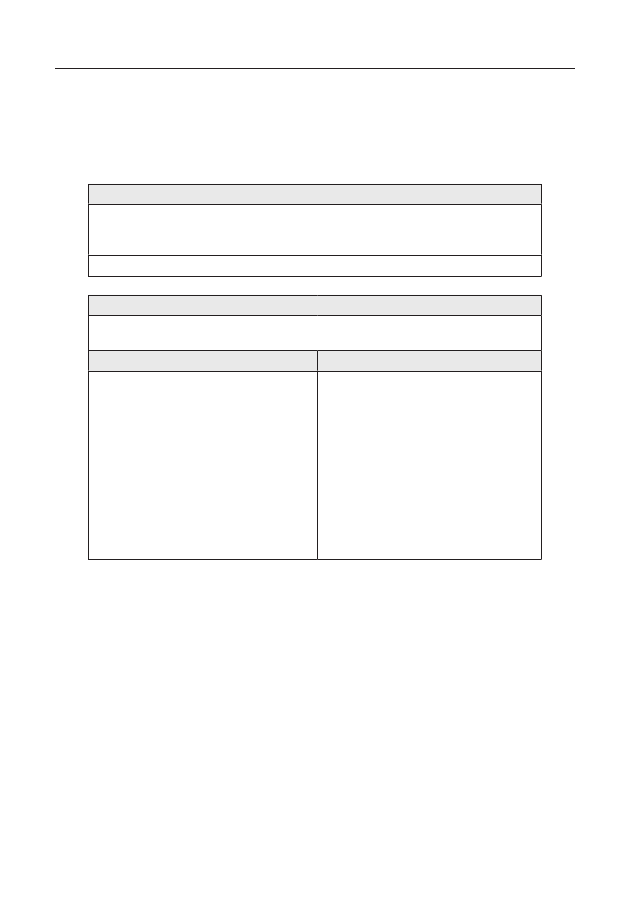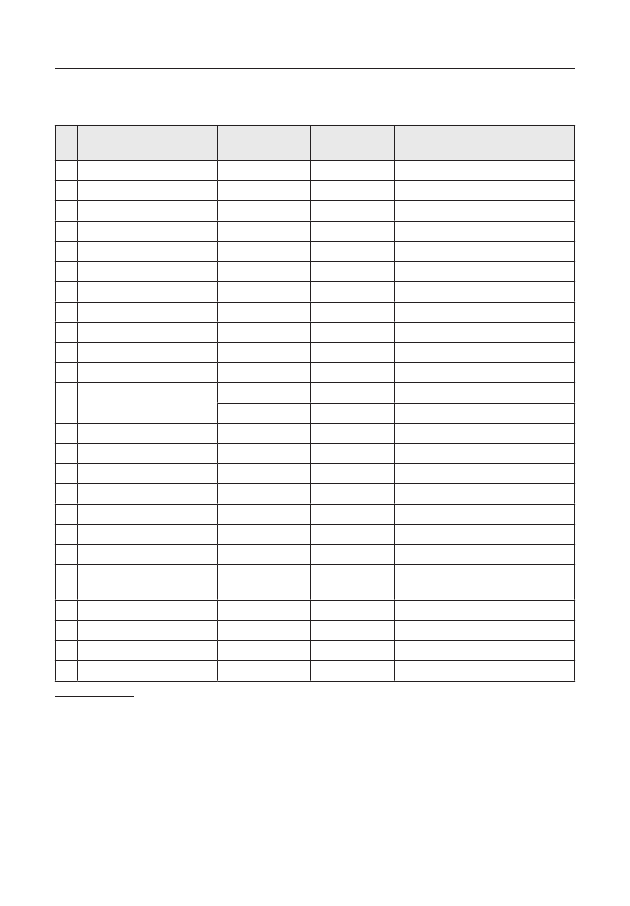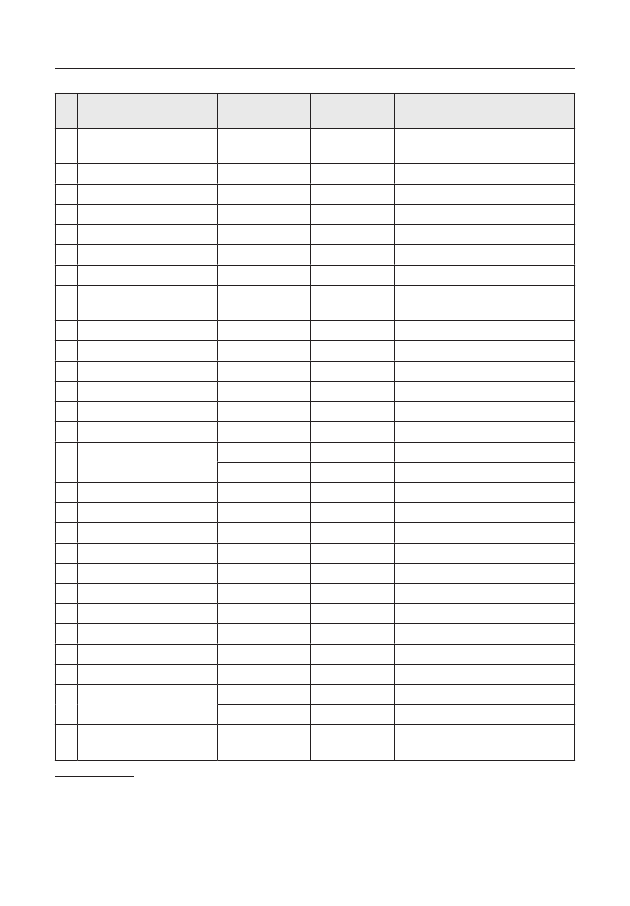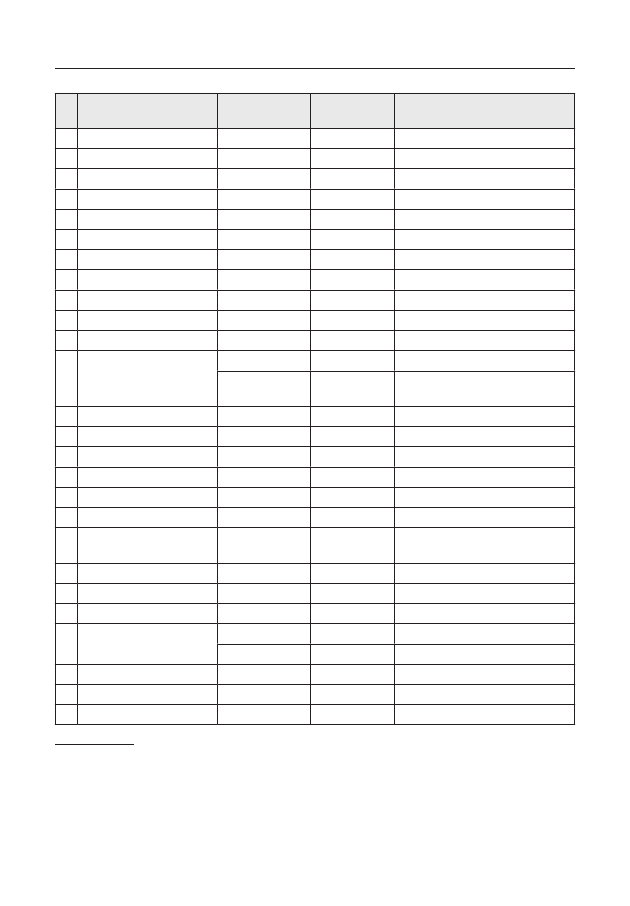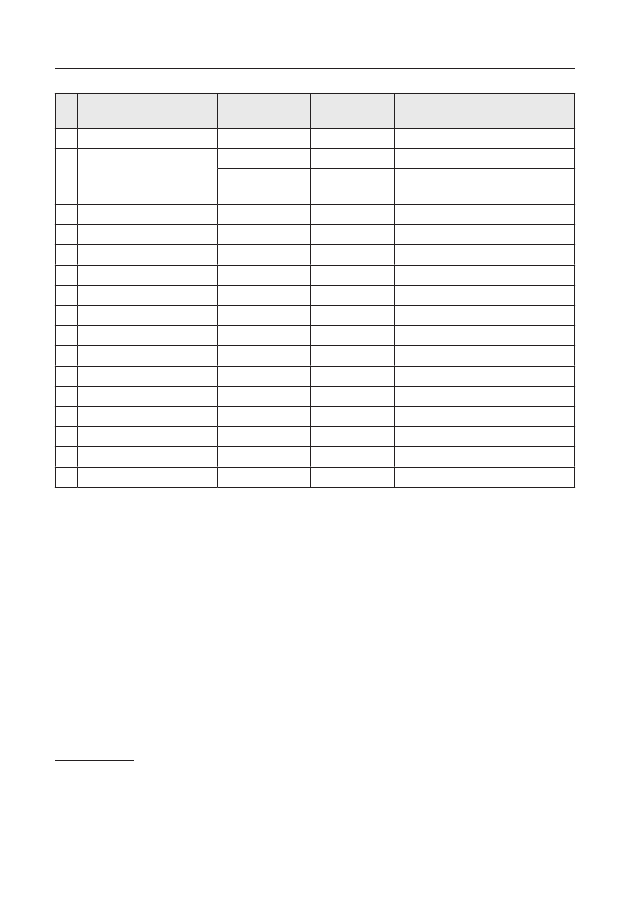Skatteudvalget 2010-11 (1. samling)
SAU Alm.del Bilag 124
Offentligt
table of Contents –3
Table of contents
About the Global Forum� � � � � � � � � � � � � � � � � � � � � � � � � � � � � � � � � � � � � � � � � � � � � 5Executive Summary� � � � � � � � � � � � � � � � � � � � � � � � � � � � � � � � � � � � � � � � � � � � � � � � � 7Introduction� � � � � � � � � � � � � � � � � � � � � � � � � � � � � � � � � � � � � � � � � � � � � � � � � � � � � � �11information and methodology used for the peer review of denmark � � � � � � � � � �11overview of denmark � � � � � � � � � � � � � � � � � � � � � � � � � � � � � � � � � � � � � � � � � � � � � 12General information on the legal system and the taxation system � � � � � � � � � � � 13recent developments � � � � � � � � � � � � � � � � � � � � � � � � � � � � � � � � � � � � � � � � � � � � � � �18Compliance with the Standards� � � � � � � � � � � � � � � � � � � � � � � � � � � � � � � � � � � � � � 19A. Availability of Information� � � � � � � � � � � � � � � � � � � � � � � � � � � � � � � � � � � � � � � 19overview � � � � � � � � � � � � � � � � � � � � � � � � � � � � � � � � � � � � � � � � � � � � � � � � � � � � � � �a�1� ownership and identity information � � � � � � � � � � � � � � � � � � � � � � � � � � � � � �a�2� accounting records � � � � � � � � � � � � � � � � � � � � � � � � � � � � � � � � � � � � � � � � � � �a�3� banking information � � � � � � � � � � � � � � � � � � � � � � � � � � � � � � � � � � � � � � � � � �19204450
B. Access to Information� � � � � � � � � � � � � � � � � � � � � � � � � � � � � � � � � � � � � � � � � � � � 55overview � � � � � � � � � � � � � � � � � � � � � � � � � � � � � � � � � � � � � � � � � � � � � � � � � � � � � � � 55b�1� Competent authority’s ability to obtain and provide information � � � � � � � � 56b�2� notification requirements and rights and safeguards� � � � � � � � � � � � � � � � � � 61C. Exchanging Information� � � � � � � � � � � � � � � � � � � � � � � � � � � � � � � � � � � � � � � � � 63overview � � � � � � � � � � � � � � � � � � � � � � � � � � � � � � � � � � � � � � � � � � � � � � � � � � � � � � �C�1� exchange-of-information mechanisms � � � � � � � � � � � � � � � � � � � � � � � � � � � � �C�2� exchange-of-information mechanisms with all relevant partners � � � � � � � �C�3� Confidentiality � � � � � � � � � � � � � � � � � � � � � � � � � � � � � � � � � � � � � � � � � � � � � � �C�4� rights and safeguards of taxpayers and third parties� � � � � � � � � � � � � � � � � �C�5� timeliness of responses to requests for information � � � � � � � � � � � � � � � � � �636576788081
Peer review rePort – Combined Phase 1 and Phase 2 rePort – denmark – � oeCd 2011
4– table of ContentsSummary of Determinations and Factors Underlying Recommendations� � � 87Annex 1: Jurisdiction’s Response to the Review Report� � � � � � � � � � � � � � � � � � 93Annex 2: List of All Exchange-of-Information Mechanisms in Force� � � � � � � 94Annex 3: List of all Laws, Regulations and Other Material Received� � � � � � 100Annex 4: People Interviewed During On-Site Visit� � � � � � � � � � � � � � � � � � � � � �103
Peer review rePort – Combined Phase 1 and Phase 2 rePort – denmark – � oeCd 2011
about the Global forum –5
About the Global Forumthe Global forum on transparency and exchange of information for taxPurposes is the multilateral framework within which work in the area of taxtransparency and exchange of information is carried out by over 90 jurisdic-tions which participate in the Global forum on an equal footing�the Global forum is charged with in-depth monitoring and peer reviewof the implementation of the international standards of transparency andexchange of information for tax purposes� these standards are primarilyreflected in the 2002 oeCdModel Agreement on Exchange of Informationon Tax Mattersand its commentary, and in article 26 of the oeCdModelTax Convention on Income and on Capitaland its commentary as updated in2004, which has been incorporated in the unModel Tax Convention�the standards provide for international exchange on request of foresee-ably relevant information for the administration or enforcement of the domes-tic tax laws of a requesting party� fishing expeditions are not authorisedbut all foreseeably relevant information must be provided, including bankinformation and information held by fiduciaries, regardless of the existenceof a domestic tax interest or the application of a dual criminality standard�all members of the Global forum, as well as jurisdictions identified bythe Global forum as relevant to its work, are being reviewed� this process isundertaken in two phases� Phase 1 reviews assess the quality of jurisdictions’legal and regulatory framework for the exchange of information, while Phase 2reviews look at the practical implementation of that framework� some Globalforum members are undergoing combined – Phase 1 plus Phase 2 – reviews�the ultimate goal is to help jurisdictions to effectively implement the interna-tional standards of transparency and exchange of information for tax purposes�all review reports are published once approved by the Global forum andthey thus represent agreed Global forum reports�for more information on the work of the Global forum on transparencyand exchange of information for tax Purposes, and for copies of the pub-lished review reports, please refer towww.oecd.org/tax/transparency�
Peer review rePort – Combined Phase 1 and Phase 2 rePort – denmark – � oeCd 2011
exeCutive summary –7
Executive Summary1�this report summarises the legal and regulatory framework fortransparency and exchange of information in denmark as well as practi-cal implementation of that framework� the international standard, whichis set out in the Global forum’sTerms of Reference to Monitor and ReviewProgress Towards Transparency and Exchange of Information,is concernedwith the availability of relevant information within a jurisdiction, the compe-tent authority’s ability to gain timely access to that information, and in turn,whether that information can be effectively exchanged with its exchange ofinformation partners�2�denmark has a long history of developing the capacity and interna-tional linkages needed to engage in effective exchange of information for taxpurposes� it has an extensive network of bilateral agreements that providefor exchange of information in tax matters, currently comprising 23 taxinformation exchange agreements (tieas) and 70 double tax conventions(dtCs)� negotiation of agreements by denmark is underpinned by a strongco-operation mechanism involving denmark, the faroe islands, finland,Greenland, iceland, norway and sweden� denmark is also able to exchangeinformation with other eu member states1under theEU Council Directive1�the current eu members, covered by this Council directive, are: austria, belgium,bulgaria, Cyprus, the Czech republic, denmark, estonia, finland, france, Germany,Greece, hungary, ireland, italy, latvia, lithuania, luxembourg, malta, the netherlands,Poland, Portugal, romania, slovakia, slovenia, spain, sweden and the united kingdom�regarding Cyprus – note by turkey: the information in this document with reference to“Cyprus” relates to the southern part of the island� there is no single authority represent-ing both turkish and Greek Cypriot people on the island� turkey recognises the turkishrepublic of northern Cyprus (trnC)� until a lasting and equitable solution is foundwithin the context of the united nations, turkey shall preserve its position concerningthe “Cyprus issue”� note by all the european union member states of the oeCd andthe european Commission: the republic of Cyprus is recognised by all members of theunited nations with the exception of turkey� the information in this document relates tothe area under the effective control of the Government of the republic of Cyprus�
Peer review rePort – Combined Phase 1 and Phase 2 rePort – denmark – � oeCd 2011
8– exeCutive summary77/799/EECof 19 december 19772concerning mutual assistance by thecompetent authorities of the member states in the field of direct taxation andtaxation of insurance premiums and under theCouncil of Europe and OECDConvention on Mutual Administrative Assistance in Tax Matters�3�the 1989Nordic Mutual Assistance Convention on Mutual AdministrativeAssistance in Tax Matters,which is currently in force with respect to denmark,the faroe islands, finland, Greenland, iceland, norway and sweden, containsdetailed provisions on the exchange of information for tax purposes including:automatic and spontaneous exchange; simultaneous examinations; service ofdocuments; and presence and participation of representatives from requestingjurisdictions at examinations�4�denmark’s competent authority, located in the ministry of taxation(skatteministeriet), is sufficiently resourced with highly skilled staff� dueto the extensive information holdings of the ministry, including its access todenmark’s many registers, nearly half the responses to international requestsfor information in tax matters are provided by the competent authority with-out need to exercise information gathering powers� responses to exchangeof information requests are provided to requesting authorities in a timelymanner and processes are currently being developed which will ensure thatperiodic updates are provided by the danish competent authority to partieswhich have requested information from denmark�5�denmark’s institutional framework supports effective access to andprovision of information requested by competent authorities of other countries�over the last three years there have been no cases where denmark has notprovided information requested by eoi partners due to difficulties in obtainingrequested information� denmark’s tax authorities have broad powers to obtainbank, ownership, identity, and accounting information and have measuresto compel the production of such information� there are no statutory banksecrecy provisions in place that would restrict effective exchange of informa-tion� application of rights and safeguards (e.g. notification, appeal rights) indenmark do not restrict the scope of information that the tax authorities canobtain�6�the main business structures used in denmark are companies, part-nerships and foundations (commercial and non-commercial)� Public limitedcompanies in denmark can issue bearer shares up to the whole capital of thecompany and only limited mechanisms are in place to identify persons hold-ing bearer shares below a threshold of 5% of the capital or the voting rights�holding companies, which are a feature of the danish corporate sector, are2�this directive came into force on 23 december 1977 and all eu members wererequired to transpose it into national legislation by 1 January 1979� it has beenamended since that time�
Peer review rePort – Combined Phase 1 and Phase 2 rePort – denmark – � oeCd 2011
exeCutive summary –9
subject to all of the same requirements in terms of registration, submission oftax returns and keeping share registers which apply to other danish compa-nies� while trusts are not recognised under danish law, foreign trusts maybeadministered in or have a trustee in denmark�7�a good legal and regulatory framework for the maintenance of owner-ship and identity information is in place in denmark� this relies on a mixtureof requirements on the legal entities themselves and to maintain certain recordsand on financial institutions and professions to conduct customer due dili-gence, along with requirements to submit certain information to governmentauthorities� similarly, a good framework exists requiring adequate accountingrecords be kept, including underlying documentation, for a minimum of fiveyears� Comprehensive ownership information may not however be maintainedby companies with limited liability, associations with limited liability or co-operatives with limited liability� financial institutions are required to maintainrecords of individual transactions and, under anti-money laundering legislation,customer identification records are maintained for 5 years�8�overall, denmark has an excellent system for the exchange of infor-mation in tax matters� its laws are clear and ensure that the appropriate infor-mation is available and accessible to the ministry of taxation for internationalinformation exchange matters� this information can be exchanged with over100 other countries� denmark’s competent authority is clearly dedicated toperforming this role well, to support denmark’s national tax system, to pro-gress international tax matters and to fulfil its international obligations�
Peer review rePort – Combined Phase 1 and Phase 2 rePort – denmark – � oeCd 2011
introduCtion –11
Introduction
Information and methodology used for the peer review of Denmark9�the assessment of the legal and regulatory framework of denmarkand the practical implementation and effectiveness of this framework wasbased on the international standards for transparency and exchange ofinformation as described in the Global forum’sTerms of Reference,andwas prepared using theMethodology for Peer Reviews and Non-MemberReviews�the assessment was based on the laws, regulations, and exchange ofinformation mechanisms in force or effect as at early september 2010, otherinformation, explanations and materials supplied by denmark during theon-site visit that took place on 15-17 June 2010, and information supplied bypartner jurisdictions� during the on-site visit, the assessment team met withofficials and representatives of relevant danish public agencies, including theministry of taxation, the Commerce and Companies agency, the financialsupervisory authority and the Civil affairs agency (see annex 4)�10�theTerms of Referencebreaks down the standards of transparencyand exchange of information into 10 essential elements and 31 enumer-ated aspects under three broad categories: (a) availability of information;(b) access to information; and (C) exchange of information� this com-bined review assesses denmark’s legal and regulatory framework and theimplementation and effectiveness of this framework against these elementsand each of the enumerated aspects� in respect of each essential element adetermination is made regarding denmark’s legal and regulatory frameworkthat either:(i)the element is in place;(ii)the element is in place but certainaspects of the legal implementation of the element need improvement; or(iii)the element is not in place� these determinations are accompanied byrecommendations for improvement where relevant� in addition, to reflect thePhase 2 component, recommendations are also made concerning denmark’spractical application of each of the essential elements� as outlined in theNoteon Assessment Criteria,following a jurisdiction’s Phase 2 review, a “rating”will be applied to each of the essential elements to reflect the overall positionof a jurisdiction� however this rating will only be published “at such time as
Peer review rePort – Combined Phase 1 and Phase 2 rePort – denmark – � oeCd 2011
12– introduCtiona representative subset of Phase 2 reviews is completed”� this report there-fore includes recommendations in respect of denmark’s legal and regulatoryframework and the actual implementation of the essential elements, as wellas a determination on the legal and regulatory framework, but it does notinclude a rating of the elements�11�the assessment was conducted by a team which comprised twoassessors and a representative of the Global forum secretariat: ms aikokimura, national tax agency, Japan; mr aldo farrugia, inland revenuedepartment, malta; and ms rachelle boyle of the Global forum secretariat�the assessment team examined the legal and regulatory framework for trans-parency and exchange of information and relevant exchange-of-informationmechanisms in denmark�
Overview of Denmark12�the kingdom of denmark is a scandinavian nation in northerneurope which is home to just over 5�5 million inhabitants�3while thekingdom consists of three autonomous parts: denmark, the faroe islandsand Greenland, as the faroe islands and Greenland are completely independ-ent with respect to international tax matters (see further below), this reviewfocusses solely on denmark�13�while danish is the country’s only official language, both englishand German are widely spoken� denmark is separated from norway andsweden to the north by the north sea and the baltic sea and bordered tothe south by Germany� denmark is divided into five regions and 98 munici-palities� the regions were established in 2007, replacing the former countysystem (comprised of 13 counties), as part of a program of danish municipalreform� also as part of this reform, 207 municipalities were combined intotoday’s 98� unlike in the former county system, the regions are not allowedto levy taxes�14�danish Gross domestic Product (GdP) was slightly overusd 309 billion in 2009�4the services sector makes up 64�7% of GdP whilethe industrial sector represents 30�7%� denmark has considerable oil andnatural gas resources coming from the north sea and is a major exporter ofcrude oil� important industries include iron, steel, metals, chemical, textilesand clothing� denmark advocates free trade and neoliberal economic policies�the currency of denmark is the danish kroner (dkk) which is pegged tothe euro (dkk 7�4514792071 = eur 1 as at 6 august 20105)�3�4�5�2009 figures� statistics denmark,www.dst.dk�www.imf.org�www.xe.com.
Peer review rePort – Combined Phase 1 and Phase 2 rePort – denmark – � oeCd 2011
introduCtion –13
15�as a country, denmark is characterised by its strong welfare-orientedprofile� it maintains an egalitarian ethos and has one of the lowest levels ofsocial inequality (Gini coefficient 22�5)6, with tax-paid education, universalwelfare insurance programs and comparatively large social benefits� surveyshave ranked denmark “the happiest place in the world”, based on standardsof health, welfare, and education�7in 2009, denmark was the second leastcorrupt country in the world according to the Corruption Perceptions index�8
General information on the legal system and the taxation system16�the kingdom of denmark is a constitutional monarchy� accordingto theConstitution,the monarch is sacrosanct and appoints and dismisses thePrime minister and other ministers� the monarch technically holds executivepower, but his/her role is strictly ceremonial�17�the head of the government is the Prime minister who appoints thecabinet, including a minister for taxation� the legislative branch in denmarkconsists of a 179-seat unicameral Parliament called the folketing whosemembers are directly elected by popular vote to serve four year terms� ofthe 179 seats, two members are from Greenland and two are from the faroeislands (both of which have self-ruling systems)� bills are presented to theParliament along with “explanatory notes”, which are recognised as a sourceof proper interpretation of the law and are used widely by the danish courtswhen interpreting the law, and then must pass through the statsrådet – a privycouncil headed by the monarch – before being validated by royal assent�18�the legal tradition in denmark is neither civil nor common law – itis commonly characterised as a combined scandinavian-Germanic civillaw system� Generally there is codification of the law, but customary law isrecognised� major sources of law in denmark include the 1953Constitution,acts, executive orders, regulations, precedent, and customary law� since 1973,denmark has been a member of the eu and a growing proportion of legisla-tion operative in denmark originates from the eu, though not legislationconcerning direct taxation� some of these laws apply directly, while othersmust be implemented in danish legislation before they can take effect�19�theConstitutionart�3 guarantees judges’ independence� a judgecan be removed from office only by order of the special Court of indictmentand revision� there is no formal division within the courts and all courts6�7�8�www.oecd.org/statisticsdata/0,2643,en_2649_34637_1_119656_1_1_37419,00.html�www2.le.ac.uk and http://worlddatabaseofhappiness.eur.nl/�w w w.t ran sparenc y.org/polic y _ re search/sur ve ys_ indice s/cpi/20 09/cpi_2009_table�
Peer review rePort – Combined Phase 1 and Phase 2 rePort – denmark – � oeCd 2011
14– introduCtioncan preside over civil and administrative disputes, criminal justice andconstitutional matters� the hierarchy of danish justice courts begins withthe højesteret (supreme Court) at the top, followed by 2 landsretten (highcourts) and 24 byretten (district courts)� denmark also has the Court ofimpeachment of the realm (rigsretten), which presides over cases broughtagainst ministers, and the special Court of final appeal (den særligeklageret), for cases brought against judges and for the retrial of criminalcases� the european Court of Justice may determine whether a danish law isin accordance with the eu treaty and with other eu legislation�
The tax system20�for tax purposes, Greenland and the faroe islands are regardedas separate jurisdictions� this means that danish tax legislation does notapply in these autonomous areas� tax treaties and the 1989Nordic MutualAssistance Convention on Mutual Administrative Assistance in Tax Mattersare in force between denmark and these jurisdictions�21�as a percentage of GdP, denmark has the highest taxes in the worldat 48�3%�9all income from employment/self-employment is levied a labourmarket contribution of 8% before income tax� individuals’ world-wide incomeis taxed on a progressive basis, while corporate tax is a flat rate� the value-added tax (vat) is the highest in the world at 25%� taxpayers consist of:• danish resident individuals are taxable on all income including: (1)personal income; (2) capital income; and (3) income from shares� theincome is taxed according to a progressive scale where the highestmarginal tax rate for personal income is 56�1%;non-resident individuals with income from danish sources,e.g.divi-dends or royalties and income from employment or a permanentestablishment in denmark;companies and foundations registered in or with effective manage-ment in denmark are subject to a corporate tax of 25% of taxableworldwide profit (except income from permanent establishmentsabroad), whether or not profits are distributed� no danish fran-chise tax or net wealth tax are levied on companies or branches indenmark; andnon-resident companies and foundations with income from danishsources,e.g.income from a permanent establishment in denmark ordividend, interest or royalty�
•
•
•
9�
www.oecd.org/ctp/revenuestats�
Peer review rePort – Combined Phase 1 and Phase 2 rePort – denmark – � oeCd 2011
introduCtion –15
Key Danish legislation relevant to international exchange of tax informationAct on Certain CommercialUndertakings(lov om visseerhvervsdrivende virksomheder)Act on Commercial Foundations(lovom erhvervsdrivende fonde)Act on the Central BusinessRegister(lov om Det CentraleVirksomhedsregister (CVR))Act on Financial Business(lov omfinansiel virksomhed)Act on Financial Statements(årsregnskabsloven)Act on Measures to Prevent MoneyLaundering and Financing ofTerrorism(hvidvaskloven)Act on Security Trading(lov omværdipapirhandel)Bookeeping Act(bogføringsloven)Danish Act on Public and PrivateLimited Companies(Selskabsloven,DCA)Tax Assessment Act(Lov ompåligningen af indkomstskat til staten(Ligningsloven))Tax Control Act(Skattekontrolloven)
22�the oldest of denmark’s current network of international tax agree-ments is the bilateral double taxation convention signed with israel in 1966�denmark has a very large network of agreements allowing for exchange ofinformation for tax purposes, encompassing 93 jurisdictions� in additionto its 70 dtCs and 23 tieas, denmark is able to exchange informationin tax matters under theNordic Mutual Assistance Convention on MutualAdministrative Assistance in Tax Matters,theEU Council Directive 77/799/EECof 19 december 1977 concerning mutual assistance by the competentauthorities of the member states in the field of direct taxation and taxationof insurance premiums, and theCouncil of Europe/OECD Convention onMutual Administrative Assistance in Tax Matters�23�the minister for taxation has delegated the role of competent author-ity for international exchange of information for tax matters to the Customsand tax administration (ministry of taxation notice 1029/2005)� the com-petent authority in denmark is therefore the Customs and tax administration(Cta) – skatteministeriet – which is responsible for administration andcollection of direct taxation, vat, and other forms of indirect taxation andcustoms procedures�
Peer review rePort – Combined Phase 1 and Phase 2 rePort – denmark – � oeCd 2011
16– introduCtionKey authorities and professional bodies relevant to international exchangeof tax informationBar and Law Society (BLS)Customs and Tax Administration(CTA)Commerce and Companies Agency(CCA)Ministry of Justice (MJT)Ministry of Foreign Affairs (MFA)Money Laundering Secretariat(financial intelligence unit)
Enterprise and Construction Authority State Prosecutor for Serious(ECA)Economic CrimeFinancial Supervisory Authority (FSA)
24�in 2006, denmark established the money laundering forum to co-ordinate and exchange information in order to enhance efforts by the authori-ties and fulfil international commitments regarding the prevention of moneylaundering and financing of terrorism�
Overview of the financial sector and relevant professions25�the danish financial sector is deep (total assets are close to five timesGdP) and sophisticated� since the deregulation of the 1970–1980s, while it is stillprohibited to carry on some financial activities in the same company (for exam-ple, commercial banking and insurance activities), it is possible to set up holdingcompanies and inter-company ownership among financial institutions� the twolargest banks account for approximately 75% of the total assets of all banks andprovide more than 50% of commercial bank lending� the danish financial sectoris characterised by a large number of banks, most of them small banks�26�Compared to other countries, denmark has a well-developed andmature insurance industry with 174 insurance companies and 37 pensionfunds offering a broad range of high-quality insurance and pension productsto personal and corporate customers� in 2004, the five largest life insurancecompanies accounted for 88% of gross premiums� since 1 January 2000,insurance intermediaries have been regulated by theInsurance MediationAct�the fsa licenses and registers brokers in a public register, which isaccessible on the fsa web-site�27�the securities sector is diverse and comprises a large number of asso-ciations as well as securities dealers and brokers, who are covered by the term“investment companies”� danish investment companies range from smallsingle proprietorships to large companies, with 10 holding licenses to provideservices internationally� 959 foreign investment companies have licenses intheir home countries to carry out activities in denmark, 5 of which haveestablished branches in denmark�
Peer review rePort – Combined Phase 1 and Phase 2 rePort – denmark – � oeCd 2011
introduCtion –17
28�there are slightly more than 5 000 lawyers (advokat) practicing indenmark� lawyers typically engage in legal advisory services and legal rep-resentational services before the courts and public authorities and also pro-vide economic and other advisory services in connection with their primarybusiness� all lawyers practicing in denmark are members of the danish barand law society and are subject to its disciplinary functions� in denmark,notaries do not provide services for clients� there are no other independentlegal professionals in denmark�
The financial sector (2008 figuresa)TypeBanksMortgage-credit institutionsInsurance companiesShip financing institution (skibsfinansieringsinstitut)Company pension funds (firmapensionskasser)National pension plansbAssociations: Investment, special-purpose, approved restrictedand hedgeSecurities dealersInvestment management companiesa� Provided by the ministry of taxation, may 2010�b� arbejdsmarkedets tillægspension (atP), lønmodtagernes dyrtidsfond (ld),arbejdsmarkedets erhvervssygdomssikring (aes) and den særlige pensionsopsparing(sP-ordningen)�Number138817413741174515
29�denmark has nearly 3 000 registered public accountants and 2 000registered state-authorised public accountants� only approved accountantsare permitted to audit companies’ (limited liability) accounts according to theAct on Financial Statements�there are also accountants in denmark who arenot registered or licensed� their work opportunities are limited, for example,they cannot conduct most audit activities�30�in denmark, trust and company service providers are not recognisedor registered as a separate business area or profession� lawyers and account-ants normally provide these services� according to theAct on Measures toPrevent Money Laundering and Financing of Terrorism 2009,providers oftrust and company services are registered with and supervised by the CCa�
Peer review rePort – Combined Phase 1 and Phase 2 rePort – denmark – � oeCd 2011
18– introduCtion
Recent developments31�in 2009, the parliament approved the newCompanies Act,whichreplaces thePublic Companies Actand thePrivate Companies Actandchanges the current regulation of limited liability companies significantly�the main part of theCompanies Actentered into force in march 2010 and theremainder will come into effect during 2010 and 2011� the reason for the latercommencement is that the remaining parts of the act require customisation ofthe CCa’s it systems�32�tax reforms called “forårspakke 2�0” were adopted by parliamentin may 2009 and will come into force during 2010-2019� the changes aim toreduce the marginal income tax rates for all people actively participating onthe labour market�
Peer review rePort – Combined Phase 1 and Phase 2 rePort – denmark – � oeCd 2011
ComPlianCe with the standards: availability of information –19
Compliance with the StandardsA. Availability of InformationOverview33�effective exchange of information requires the availability of reliableinformation� in particular, it requires information on the identity of ownersand other stakeholders as well as information on the transactions carried outby entities and other organisational structures� such information may be keptfor tax, regulatory, commercial or other reasons� if such information is notkept or the information is not maintained for a reasonable period of time, ajurisdiction’s competent authority10may not be able to obtain and provide itwhen requested� this section of the report describes and assesses denmark’slegal and regulatory framework on availability of information� it also assessesthe implementation and effectiveness of this framework�34�a good legal and regulatory framework for the maintenance of owner-ship and identity information is in place in denmark and denmark’s exchangeof information partners report that responses to requests for exchange of owner-ship information have been satisfactorily delivered� this relies on a mixture ofrequirements on the legal entities themselves and to maintain certain records andon financial institutions and professions to conduct customer due diligence, alongwith requirements to submit certain information to government authorities�35�the main business structures used in denmark are companies,partnerships and foundations� holding companies, which are a feature of thedanish corporate sector, are subject to all of the same requirements in terms ofregistration, submission of tax returns and keeping share registers which applyto other danish companies� while trusts are not recognised under danish law,foreign trusts maybe administered in or have a trustee in denmark�10�the term “competent authority” means the person or government authority des-ignated by a jurisdiction as being competent to exchange information pursuantto a double tax convention or tax information exchange�
Peer review rePort – Combined Phase 1 and Phase 2 rePort – denmark – � oeCd 2011
20– ComPlianCe with the standards: availability of information36�information on all businesses is contained in the Central businessregister (Centrale virksomhedsregister (Cvr)) maintained by the Commerceand Companies agency (CCa)� the registration requirements, which don’talways involve submission of ownership information, are complemented byobligations to submit information in annual tax returns and obligations tosubmit information to the financial supervisory authority (fsa) and theCustoms and tax administration (Cta)� these, plus requirements on theentities themselves to maintain records and detailed customer due diligence(Cdd) conducted by financial undertakings under theAML/CFT Act,meanthat ownership and identity information is available to the competent authori-ties for a significant proportion of the relevant entities� information maynot however be available on the owners of companies, associations and co-operatives with limited liability�37�Public limited companies in denmark can issue bearer shares up tothe whole capital of the company� the extent of issuance of bearer shares indenmark is not known� denmark has not established a custodial arrangementwith a recognised custodian or other similar arrangement to immobilize suchshares� some limited mechanisms are in place to identify the persons holdingbearer shares, notably if the voting right conferred on the shares reaches 5%of the capital and in advance of the company’s general meeting in order toexercise shareholder’s rights at the meeting�38�all entities must maintain a full range of accounting records, includ-ing underlying documentation, for a minimum of five years� in addition,financial institutions are required to maintain records of individual transac-tions for five years and anti-money laundering law requires that customeridentification records are maintained for five years�
A.1. Ownership and identity informationJurisdictions should ensure that ownership and identity information for all relevantentities and arrangements is available to their competent authorities.
Companies(ToR A.1.1)39�danish legislation allows for the formation of the following types ofcompanies:• public limited companies (aktieselskaber, a/s): the structural andorganisational requirements of an a/s are outlined in theCompaniesAct�it must have a minimum share capital of dkk 500 000(eur 67 050);
Peer review rePort – Combined Phase 1 and Phase 2 rePort – denmark – � oeCd 2011
ComPlianCe with the standards: availability of information –21
•
private limited companies (anpartsselskaber, aps): incorporationrequirements are similar to those provided for an a/s except that theshare capital minimum is dkk 80 000 (eur 10 728) (CompaniesAct);companies or associations with limited liability (selskaber og fore-ninger med begrænset ansvar, smba and fmba): while thesecompanies are subject to the general provisions of theAct on CertainCommercial Undertakings,there is no specific regulation of compa-nies and associations with limited liability;limited liability co-operatives (andelsselskaber, amba): the objectsof a limited liability co-operative must be to promote the commoninterests of the members through business activities and whoseprofit is either distributed among the members in proportion to theirshare of the turnover or is undistributed (Acton Certain CommercialUndertakings);andeuropean Companies (se): european Companies are regulated byCouncil regulation (eeC) no�2157/2001 onStatute for a EuropeanCompany and the Danish Act on Administration of the Regulationwhich permits the creation and management of companies with aeuropean dimension, free from the territorial application of nationalcompany law�
•
•
•
40�a large number of international companies have taken advantageof danish tax rules related to holding companies (including an exemptionfrom withholding tax on dividends forbeneficial owners of 10% or more ofthe capital where exemption provisions are contained in the relevant doubletaxation agreement or the eu parent/subsidiary directive)�11holding compa-nies are not defined in danish legislation as a separate type of entity, but canbe any of the five types of companies noted above� holdingcompanies aresubject to all of the same requirements in terms of registration, submission oftax returns and keeping share registers described below which apply to otherdanish companies of each type�41�inapril 2010 there were slightly over 43 500 public limited compa-nies (a/s) and 181 000 private limited companies (aps) in denmark� in addi-tion, there were 6 700 businesses subject to theAct on Certain CommercialUndertakings(i.e. partnerships, and companies with limited liability11�on 7 June 2010, the Copenhagen Post reported that at least 500 holding com-panies have been established in denmark by danish and foreign corporationsin the past two years� “offshore holdings Companies face tax Probe”www.cphpost.dk/news/national/88-national/49165-offshore-holding-companies-face-tax-probe.html�
Peer review rePort – Combined Phase 1 and Phase 2 rePort – denmark – � oeCd 2011
22– ComPlianCe with the standards: availability of information(smba), associations with limited liability (fmba) and co-operatives withlimited liability (amba))�42�Companies with limited liability (smba) have become an attractivetype of business for smaller companies� as at august 2010, there were 1 776smbas in denmark� they are taxed in the same way as traditional limitedliability companies if they are registered in denmark or have effective placeof management in denmark, but there is no capital requirement�smbashave to register with the CCa and are obliged to submit annual accounts or,alternatively, statements of exception, to the CCa�
Ownership information companies held by government authoritiesinformation reported to the danish Commerce and Companies agency (CCa)43�information on all businesses is available in the Central businessregister (Centrale virksomhedsregister (Cvr))� the purpose of the Cvr isto (Acton the Central Business Registers�2):
¶ contain core data on legal entities that engage in business or areemployers, and the production entities associated with them;¶ implement clear and unambiguous numbering of the legal entitiesand associated production entities contained within the registry (theCvr number); and¶ make the core data available to public authorities and institutions aswell as to private parties�44�the Cvr is operated by the CCa, within the ministry of economicand business affairs� the CCa works closely with the ministry of labour,the denmark bureau of statistics and the Cta to manage the register� thisco-ordination is particularly necessary because registration requirements forestablishing companies are in several pieces of legislation� the Cvr collectsand centralises all the data contained in the other registers� the data enteredin the Cvr is available to the authorities and the public (Acton the CentralBusiness Registers�17 and s�18)�12Government authorities, including theCta, have extensive access to the information holdings of the CCa, beyondthat available to the public�
12�
atwww.virk.dk/cvr�
Peer review rePort – Combined Phase 1 and Phase 2 rePort – denmark – � oeCd 2011
ComPlianCe with the standards: availability of information –23
Registration requirements managed by the CCAPublic limited companiesPrivate limited companiesLimited partnerships on sharesCertain commercial undertakingsCommercial foundationss.40 Companies Acts.40 Companies Acts.40 and s.358 Companies Acts.8 Act on Certain CommercialUndertakingss.5 Act on Commercial Foundations
45�the information contained in the Cvr comprises, amongst otherthings (Acton the Central Business Registers�10 and s�11); the entity’s Cvrnumber, form of business organisation, commencement date and (if relevant)termination date, business name and business address, the number of employ-ees, and the type of business activity and types of sub-activities, if any� noownership information is thus disclosed via the Cvr�46�the requirements for registration are of a similar nature for all typesof companies�13as part of registration, information must be submitted iden-tifying each of the founders (who are likely to be some but not necessarilyall of the company’s owners), members of the management board, the boardof directors, and the Chairman� if the registered information is subject toa change, the company must report the change within 2 weeks�14however,limited information regarding the owners of danish companies is providedas part of registration in the Cvr�47�foreign companies can have representative offices or branch officesin denmark� there are no registration requirements for representative offices,however the activities which such offices can carry out are extremely limited(no commercial activities and no issuance of invoices)� denmark is host toapproximately 800 registered branches of foreign companies� a branch officecan be established in denmark if the parent company is registered in the eu,eea, australia or the usa� if the parent company is not registered in thesecountries, the branch office may still be established if the parent companysends a statement of reciprocity to the CCa with the registration form�48�branches of foreign companies similar to danish public limitedcompanies (a/s) and private limited companies (aps) are subject to therequirements of theCompanies Act,Chapter 19� the establishment of abranch must be registered with the CCa (s�349)� branches of other foreigncompanies with limited liability must also be registered with the CCa (Acton Certain Commercial Undertakingss�8(2))� basic information about the13�14�www.virk.dk�it is possible to register changes online:www.webreg.dk�
Peer review rePort – Combined Phase 1 and Phase 2 rePort – denmark – � oeCd 2011
24– ComPlianCe with the standards: availability of informationparent company, its articles of association, objects, share capital, accountingyear and authorised officer(s) must be submitted as part of registration� inaddition the CCa must be informed of the name of the branch, its address indenmark, its objects, and the names and addresses of the persons with powerof attorney who can sign for the branch�49�information on ownership of the foreign company is not registeredwith the CCa� however, theTax Control Acts�3a, described below, appliesto foreign companies formed under the laws of another jurisdiction, but taxresident in denmark due to effective management in denmark�50�the CCa conducts random checks on the information submitted aspart of registration and also verifies details if it has reason to suspect theremay be an error� during 2008 and 2009 there were slightly over 1% of regis-trations which contained inaccurate information� in 2010 (to July), 627 of the65 152 registrations (less than 1%) contained one or more element of inac-curate data� these very low levels of error derive from the strong complianceculture in denmark and also from the constructive relationships establishedby the CCa with the private sector�information reported to the Customs and tax administration51�according to theTax Control Acts�3a, a/s, aps and other limitedliability companies whose profit is distributed in proportion to the paid-upcapital must in their income tax returns provide information on all legalowners who during the income year own 25% or more of the capital in thecompany or control 50% or more of the voting rights in the company�52�while this threshold is very high – allowing for identification of onlya small proportion of the most significant shareholders – the calculation ofnumber of shares owned must include all securities belonging to the share-holder’s spouse, parents, grandparents, children and grandchildren and theirspouses, and securities owned by companies over which these persons has acontrolling interest�information reported to the financial supervisory authority (fsa)53�a securities dealer trading on a regulated market is obliged to reportthe details of all securities transactions to the fsa as soon as possible andno later than by the closing time on the relevant market the day after comple-tion of the transaction� a securities dealer is further obliged to maintain allrelevant information about transactions with financial instruments for a mini-mum of five years after carrying out the transaction (Acton Security Trading,s�33)� in addition, anyone who holds shares in a publicly-traded company isobliged to notify the fsa, and the company itself, of the details of the share-holding when (s�29(2)):
Peer review rePort – Combined Phase 1 and Phase 2 rePort – denmark – � oeCd 2011
ComPlianCe with the standards: availability of information –25
•
the voting right conferred on the shares represents no less than 5% ofthe share capital’s voting rights or their nominal value accounts forno less than 5% of the share capital;a change of previously notified holding results in limits at intervalsof 5, 10, 15, 20, 25, 50 or 90% and limits of 1/3 or 2/3 of the sharecapital’s voting rights or nominal value being reached or no longerbeing reached�
•
54�a direct or indirect purchase of a qualified portion (10% or moreof the capital or the voting rights) in a financial undertaking requires priorapproval from the fsa (Acton Financial Businesss�61)� “financial undertak-ings” are defined as banks, mortgage-credit institutions, investment compa-nies, investment management companies and insurance companies� the sameobligation applies to an increase in the qualifying interest which, after theacquisition, results in the interest equalling or exceeding a limit of 20%, 33%or 50% of the share capital or voting rights� similarly, when a natural or legalperson is planning to dispose of a qualifying interest, or reduce a qualifyinginterest in a financial undertaking, such that the disposal entails that the limitof 20%, 33% or 50% respectively of the company capital or voting rights isno longer achieved, the person is obliged to notify the fsa of this in writingin advance, stating the size of the planned future holding (s�61b)�55�banks and other financial companies are obliged to annually reportownership information on persons who own a qualified portion of the finan-cial company to the fsa (s�61c(2))� due to the annual nature of this report-ing, particularly where there has been a period of interest in a company, theownership information held by the fsa can be up to one year out of date�Companies and associations with limited liability, limited liability co-opera-tives and european companies56�Companies or associations with limited liability (smba, fmba) andlimited liability co-operatives (amba) are obliged to submit information tothe CCa when the company is founded� these submissions include informa-tion on the founders of the company, but not necessarily all of the ownersof the company� this information is used only to decide whether the entitymeets the requirement of the relevant legislation, though it is kept by the CCaand could be accessed if needed�57�Companies with limited liability (smbas) which are registered indenmark or have effective management in denmark are also required tosubmit tax returns to the Cta� for some smbas,15the tax returns must15�since a march 2010 amendment to theAct on Certain Commerical Undertakings,all new registered s�m�b�a�s are not required to submit ownership informationin tax returns�
Peer review rePort – Combined Phase 1 and Phase 2 rePort – denmark – � oeCd 2011
26– ComPlianCe with the standards: availability of informationcontain information on those legal owners who during the year owned 25%or more of the share capital or held 50% or more of the voting rights (TaxControl Acts�3a)� associations with limited liability (fmbas) and limitedliability co-operatives (ambas) which are registered in denmark or haveeffective management in denmark are also required to submit tax returns,however they are not required to submit ownership information (s�3a)�58�the same requirements apply to european Companies (se) as forpublic limited companies (a/s) (CouncilRegulation on SE,article 10)�the newCompanies Actprovisions (not yet in force)59�under the newCompanies Actprovisions, companies will also berequired to promptly report the changes to shareholdings on the websiteof the CCa, which will be accessible by the public (s�58)� a change to theTax Control Acts�3a will come into force at the same time as the new s�58�limited liability companies other than public and private companies willbe obliged in the income tax return to provide information on owners, whoduring the income year own 5% or more of capital in the company or control5% or more of the voting rights in the company� as a result of this change,individual shareholders will no longer in the calculation include securitiesbelonging to the shareholder’s family or securities owned by companies ofwhich the family has a controlling interest�60�it is anticipated that these requirements will come into force in thenext two to three years� they will also apply to companies formed underthe laws of another jurisdiction, but tax resident in denmark due to place ofeffective management in denmark�
Ownership information held by companiesPublicly-traded companies61�anyone who holds shares in a publicly-traded company is obliged tonotify the company, and also the fsa, of the details of the shareholding when(Acton Security Tradings�29(2)):• the voting right conferred on the shares represents no less than 5% ofthe share capital’s voting rights or their nominal value accounts forno less than 5% of the share capital;a change of previously notified holding results in limits at intervalsof 5, 10, 15, 20, 25, 50 or 90% and limits of 1/3 or 2/3 of the sharecapital’s voting rights or nominal value being reached or no longerbeing reached�Companies must publish such notifications (s�29)�
•
62�
Peer review rePort – Combined Phase 1 and Phase 2 rePort – denmark – � oeCd 2011
ComPlianCe with the standards: availability of information –27
Public and private limited companies63�similarly, s�55 of the newCompanies Actrequires anyone holdingshares in a public or private company to give notice to the company, withintwo weeks, informing it of such holding, in exactly the same circumstancesas outlined in s�29(2) of theAct on Security Trading.64�Public and private limited companies must keep shareholder registersrecording the names of the holders of registered shares (CompaniesActs�50)�the register may be held somewhere other than the company’s registeredoffice, including in another eu/efta member state (CompaniesActs�51)� ifthe register is not held at the registered office, this must be specified in thearticles of association� the register of shareholders must in any case be opento inspection by public authorities (CompaniesActs�51(1))�65�if the registered share changes hands, the new shareholder mustwithin two weeks inform the company and request that his/her/its name isentered in the shareholders register, upon proof of title (s�52(1))� identityinformation must include name, address and CPr-number (a 10 digit identi-fication code for individuals) or Cvr-number of the shareholder� if an indi-vidual does not have a CPr number, the information must include birth date�if the shareholder is a foreign national or a foreign legal person, the notice tothe company must be accompanied by other documentation ensuring unam-biguous identification of the new shareholder�66�the purchaser of a registered share cannot exercise his rights as ashareholder until his name is recorded in the shareholder register or he hasnotified the company of the acquisition and proven the title (s�49); though thisdoes not apply to the right to receive dividend or any other disbursements�67�Public limited companies must disclose each of these registeredshareholders in the annual report, giving the full name, address and, if rel-evant, the registered office (Acton Financial Statements,s�74)�16Companies and associations with limited liability, limited liability co-opera-tives and european companies68�even though it would be maintained for management of the affairsof the company/association/co-operative, there is no specific obligation forcompanies or associations with limited liability (smba, fmba) and limitedliability co-operatives (amba) to maintain ownership and identity informa-tion, such as through a register of the owners� while this has not limited anyof denmark’s international exchange of information for tax purposes to date,it has the potential to do so at some time�16�this section will be deleted when s58 of the newCompanies Actcomes intoforce�
Peer review rePort – Combined Phase 1 and Phase 2 rePort – denmark – � oeCd 2011
28– ComPlianCe with the standards: availability of information69�the same requirements apply to european Companies (se) as forpublic limited companies (a/s) (CouncilRegulation on SE,article 10)�
Ownership information held by directors and officers70�directors and members of the management board are not required bylaw to maintain ownership information beyond that in the register of share-holders, noted above, though in the large majority of cases they would haveinformation on the company’s ultimate owners as part of their assignments�there is no requirement that companies have directors or officers resident indenmark�
Ownership information held by nominees and service providers71�it is accepted in practice that in denmark a nominee can hold shareson behalf of a shareholder in a public company� in such cases there is norequirement that the share register note which of the recorded shareholdersare nominees� nor is there a requirement that the share register record whothe real owners of the shares are� danish government authorities are notaware of the amount of nominee activity occurring in the country�72�the previously mentioned requirements in theCompanies Act(s�55)and theAct on Security Trading(s�29) for anyone who holds shares in a pub-licly-traded company to notify the company and the fsa of the details of theshareholding when they have 5% of the voting right or 5% of the share capitalor there is a change in a previously notified shareholding, apply equally topersons who own shares through nominees�73�all entities covered by theAct on Measures to Prevent MoneyLaundering and Financing of Terrorism(AML/CFTAct)are supervised byeither the fsa (financial institutions), the CCa (non-financial businesses andprofessions) or the bls (lawyers) (sections 31, 34 and 34a)� financial entitiescovered byAML/CTF Actannex 1 must register with the fsa in order tocarry out their activity (at october 2010, 83 such entities were registered, notincluding money remitters)� entities that commercially carry out activitiesinvolving currency and service providers are required to register with theCCa (s�31)�17Compliance with this registration requirement is closely super-vised and generally good; 38 firms conducting company formation businesswere ordered to stop their activities during 2008-2009�74�this registration obligation specifically applies to natural andlegal persons who are “acting as or arranging for another person to act as17�the requirements for registration with the CCa are described in orderno�1197/200�
Peer review rePort – Combined Phase 1 and Phase 2 rePort – denmark – � oeCd 2011
ComPlianCe with the standards: availability of information –29
a shareholder for a third party, unless this is an undertaking the ownershipinterestsetc.of which are traded on a regulated market” and thus applies toall of the businesses and individuals acting on a commercial basis as nomi-nees� the customer due diligence (Cdd) requirements under this act are suchthat the obliged entity must know the identity of his/her clients, including;name, address and id-number (s�11-s�15)�75�this identification requirement involves establishing the identity ofthe client and the ultimate beneficial owners of the client� beneficial owneris defined in s�3, according to the definition included inthethird eu anti-money laundering directive�18with reference to funds, according to thewording of s�3�4(b), the beneficial owner is the “[p]ersonwho otherwise exer-cise control over the management of a company”�such definition, however,is not considered to be exhaustive� Pursuant to theAML/CFT Act,s�12�3og,if the client is an undertaking, then proof of identity includes name, address,business registration number (Cvr: if the undertaking does not have a Cvrnumber, similar documentation may be provided)� the ownership and controlstructure of the undertaking must be clarified and the beneficial owners ofthe undertaking must provide proof of identity�76�obliged entities must store Cdd and accounting material for noless than five years after the customer relationship has ceased� if the obligedentity ceases business or is dissolved, the last acting management mustensure that this information is stored in accordance with the act� if it is dis-solved through the intervention of the bankruptcy court, the bankruptcy courtmay decide that persons other than the last acting management are to storethe accounting material (AML/CFTActs�23)� as noted in section b�1 of thisreport, information held by nominees can be obtained by the Cta by exerciseof its powers under s�6 and s�6a of theTax Control Act�18�Directive 2005/60/EC of the European Parliament and of the Council of 26October 2005 on the Prevention of the use of the Financial System for thePurpose of Money Laundering and Terrorist Financing.with respect to com-panies that directive defines“beneficial owner” (s�6) to mean “the naturalperson(s) who ultimately owns or controls the customer and/or the natural personon whose behalf a transaction or activity is being conducted�” it goes on to indi-cate that “the beneficial owner shall at least include:(a)in the case of corporateentities:(i)the natural person(s) who ultimately owns or controls a legal entitythrough direct or indirect ownership or control over a sufficient percentage ofthe shares or voting rights in that legal entity, including through bearer shareholdings, other than a company listed on a regulated market that is subject todisclosure requirements consistent with Community legislation or subject toequivalent international standards; a percentage of 25% plus one share shall bedeemed sufficient to meet his criterion;(ii)the natural person(s) who otherwiseexercises control over the management of a legal entity�”
Peer review rePort – Combined Phase 1 and Phase 2 rePort – denmark – � oeCd 2011
30– ComPlianCe with the standards: availability of information
Ownership information held by other persons77�theAML/CFT Actapplies to an extensive range of financial under-takings and persons including all types of financial institutions, financialbusinesses and professionals engaged in providing financial services forclients (s�1)� as noted previously with respect to nominees and service pro-viders, these financial undertakings and persons are obliged to conduct Cddwhich will result in them obtaining and maintaining information on the iden-tity of their clients�
Documentation retention requirements78�there are no specific time-limits for information kept by govern-ment authorities� the CCa keeps all information that is in its possession inelectronic form indefinitely� automatic updates are performed by the CCaof details of the information in their system,e.g.changes of address, for allnatural and legal persons associated with registered entities (CompaniesActs�18 andAct on Certain Commercial Undertakingss�15d)� these updates ofthe personal information cease 10 years after the person in question ceasesto be active in the company� information kept by the Cta is covered by theOrder on State Accounting,according to which accounting material, includ-ing underlying documentation, must be kept for a minimum of five years�for retention requirement purposes, tax returns are considered accountingmaterial� the practice of the Cta, however, is that tax returns are kept forat least 10 years if the taxpayer is an employee and for at least 20 years if thetaxpayer is a company or a self-employed person�79�information on large shareholders (more than 5%) which must bedisclosed in public limited companies’ annual reports (Acton the FinancialStatements�74), is considered to be accounting information and this must be keptfor five years from the end of the accounting period the records or books concernaccording to theBookeeping Acts�10, described in section a�2 of this report�80�there is no set period of time for which information must be main-tained by the companies themselves,e.g.the shareholder register� there isno obligation to keep the information if the company is liquidated, unless aservice provider (liquidator) is involved in the liquidation� in such cases, theliquidators have an obligation to keep the information for 5 years�81�sometimes requests from foreign competent authorities for informa-tion in tax matters concerns ownership information related to a companywhich does not exist anymore and it has been difficult for the danish com-petent authority to obtain the information requested� the new system beingestablished under theCompanies Act,coupled with the fact that the CCakeeps its information indefinitely, means these difficulties are likely tobecome increasingly infrequent�
Peer review rePort – Combined Phase 1 and Phase 2 rePort – denmark – � oeCd 2011
ComPlianCe with the standards: availability of information –31
Bearer shares(ToR A.1.2)82�only danish public limited companies (a/s) can issue bearer shares,and such shares may be issued up to the whole capital of the company� as atapril 2010, there were 43 451 public limited companies (a/s) in denmark,43 236 of which were not publicly listed on the stock exchange� the CCadoes not have statistics on the extent of use of bearer shares in denmark�83�denmark has not established a custodial arrangement with a recognisedcustodian or other similar arrangement to immobilise such shares� there is norequirement to keep bearer shareholders’ names in share registers; serial num-bers are sufficient (CompaniesActs�54(1))� some measures are however in placewhich require identification of persons holding bearer shares� anyone holdingbearer shares is obliged to notify the company of this shareholding if (s�55):• the voting right conferred on the shares represents no less than 5% ofthe share capital’s voting rights or their nominal value accounts forno less than 5% of the share capital; ora change of a holding already notified entails that limits at intervals of5, 10, 15, 20, 25, 50 or 90% and limits of 1/3 or 2/3 of the share capital’svoting rights or nominal value are reached or are no longer reached�
•
84�in addition, a bearer shareholder has to identify himself one week inadvance of the company’s general meeting in order to exercise shareholder’srights at the meeting (s�84(1))� a holder of bearer shares has to demonstratethat he has title to dividends though this does not have to be registered in thecompany’s book of owners�85�while these mechanisms do allow for identification of owners of bearershares in certain circumstances, they are insufficient, particularly consideringthe large number of companies which may be issuing bearer shares in denmark�that said, foreign competent authorities have not reported cases where denmarkhas not provided information requested due to difficulties in obtaining informa-tion about bearer share holdings�
Partnerships(ToR A.1.3)86�• denmark has four types of partnerships:Partnerships limited by shares (P/s): these may also be called partnercompanies� a partner company is a limited partnership where oneor more of the limited partners in the partnership are public limitedcompanies� the limited partners have contributed capital, which isdivided into shares� a partner company must have a minimum capital ofdkk 500 000� a P/s is regulated by theCompanies Act;Chapter 21� the
Peer review rePort – Combined Phase 1 and Phase 2 rePort – denmark – � oeCd 2011
32– ComPlianCe with the standards: availability of informationrules on public limited companies (a/s) apply to P/s with the necessaryadjustments�• limited partnerships (k/s): in a k/s, one or more members – thegeneral partners – are personally, jointly and severally liable, withoutlimitation, for the debts and obligations of the undertaking, whileone or more limited partners have limited liability for the debts andobligations of the undertaking� the k/s is formed by an agreementbetween the participants, regulated by the general law on con-tracts� a k/s is covered by parts of theAct on Certain CommercialUndertakings�there were 3 328 k/s in denmark in august 2010�General partnerships (i/s): in an i/s, all members are personally,jointly and severally liable, without limitation, for the debts andobligations of the undertaking� the i/s is formed by an agreementbetween the participants, regulated by the general law on con-tracts� an i/s is covered by parts of theAct on Certain CommercialUndertakings�there were 622 i/s in denmark in august 2010�european economic interest groupings (eeiG): an eeiG is regu-lated by Council regulation (eeC) no�2137/85 of 25 July 1985 onthe european economic interest Grouping (eeiG) and the danishAct on Administration of the EEC Regulation introducing EuropeanEconomic Interest Groupings�an eeiG must be formed by at leasttwo parties, which do not themselves have limited liability, compa-nies or natural persons, who carry out any industrial, commercial,craft or agricultural activity or who provide professional or otherservices in the european economic Community�
•
•
Ownership information held by government authorities87�Partnerships are transparent for income tax purposes; most partner-ships do not themselves submit tax returns� rather, the income from the part-nership is included proportionately in each of the partners’ tax returns� thetax return forms do not require identification of the other partners involvedin the partnership, though the Cta can search its databases of all informa-tion related to the individuals’ tax returns and thus compile the informationrelated to a partnership� the exception to this is partnerships which havemore than 10 partners and some of the partners do not participate activelyin the business must submit a tax return on behalf of the partners (TaxAssessment Acts�29)�88�all partnerships are registered in the Cvr, including partner com-panies, limited partnerships and general partnerships� for partnerships, theregister contains, amongst other information, the name, address, position, andCPr/Cvr number of each full-liability partner (Acton the Central Business
Peer review rePort – Combined Phase 1 and Phase 2 rePort – denmark – � oeCd 2011
ComPlianCe with the standards: availability of information –33
Registers�11 andAct on Certain Commercial Undertakingss�2)� this appliesin the case of businesses that are in the form of full liability partners, such aslimited partnerships (k/s) or general partnerships (i/s)�89�further, k/s and i/s where all of the general partners/partners areundertakings with limited liability must be registered with the CCa inaccordance with theAct on Certain Commercial Undertakings,s�2(3)� theinformation that must be made available for registration is similar to theinformation that companies must report�19the information and subsequentchanges are registered at the CCa and available to the public� the registrationalso establishes an obligation for these partnerships to submit their annualreports to the CCa�90�Changes to the full liability partners for limited partnerships andgeneral partnerships have to be reported to the CCa and registered within 2weeks� (s�2(3) and s�10(1) of theAct on Certain Commercial Undertakings)�information on all partners must also be submitted by a partnership if itneeds to register for vat purposes� there is no ownership information sub-mitted to the CCa on the limited partners in a limited partnership which doesnot need to register for vat�91�european economic interest Groupings are obliged to register with theCCa� the registration, amongst other things, includes provision of (CouncilRegulation,articles 5-7) the name, address, legal form and CPr/Cvr num-bers for each member; and a copy of the partnership agreement/contract/memorandum underpinning the formation of the partnership� any amendmentto the partnership agreement must be notified to the CCa within 2 weeks ofthe change (Acton Certain Commercial Undertakingssections 38-39)�92�ownership information is submitted to the Cta with respect to for-eign partnerships that have a permanent establishment in denmark, thoughthis may not fully cover all foreign partnerships which:(i)have income,deductions or credits for tax purposes in denmark;(ii)carry on business indenmark� since partnerships do not normally have to submit a tax return(unless there are more than ten partners and some of the partners do not par-ticipate actively in the business:Tax Assessment Acts�29), each of the part-ners in a foreign partnership with permanent establishment in denmark hasto specify in their tax returns which income derives from their involvementin the partnership�
19�
obligations on companies to provide information on capital do not apply topartnerships�
Peer review rePort – Combined Phase 1 and Phase 2 rePort – denmark – � oeCd 2011
34– ComPlianCe with the standards: availability of information
Information held by service providers93�service providers hold the same information on partnerships as theyhold on companies in accordance with theAML/CFT Act(see earlier descrip-tion in section a�1�1)� essentially, a range of financial institutions, financialbusinesses and professionals involved in providing services for their clientsare obliged to conduct Cdd and must therefore know the identity of his/herclients, including; name, address and id-number� beneficial ownership of theclients is explored as part of Cdd�
Information held by the partnership and by partners94�in the normal course of business information on the partners wouldbe maintained for the management of the affairs of the partnership itself�when founded, limited partnerships must create a memorandum of asso-ciation which details, amongst other things the names, addresses and Cvrnumbers, if applicable, of the fully liable partners (CompaniesActs�360(1))�other forms of partnerships are not required to maintain information onthe partners� there is no obligation for an individual partner, in any type ofpartnership, to maintain identity information on the partners� there is norequirement to have resident partners�
Document retention requirements95�while there are no specific time-limits for information kept by gov-ernment authorities, the CCa keeps the information in its possession indefi-nitely� Pursuant to theOrder on State Accounting,the Cta keeps taxpayerinformation which is considered “accounting information” for five years� asa matter of practice, tax returns are kept for 10 or 20 years, depending on thetype of taxpayer�96�there is no set period of time specified in theCompanies Act,theAct on the Central Business Registeror theAct on Certain CommercialUndertakingsfor which information must be maintained by the partnershipsthemselves� under theAML/CFT Act,obliged entities must store Cdd mate-rial for no less than five years after the customer relationship has ceased� ifthe obliged entity ceases business or is dissolved, the last acting managementor others, as determined by a bankruptcy court, must ensure that this infor-mation is stored in accordance with the act (s�23)�Trusts
(ToR A.1.4)97�danish law does not include the concept of trust, and trusts cannot beset up under danish law� foreign trusts can however operate in denmark anddanish individuals and legal persons can however act as trustees, adminis-trators or protectors for foreign trusts� a foreign trust operating in denmark
Peer review rePort – Combined Phase 1 and Phase 2 rePort – denmark – � oeCd 2011
ComPlianCe with the standards: availability of information –35
may need to be registered by the danish tax authorities for tax or vat pur-poses� in such cases the trusts are registered under “other foreign firm” inthe Cvr (described previously in section a�1�1), a category which includesall types of legal bodies unknown in danish law� while the laws related tothis registration do not clearly specify that information on settlors, trusteesand beneficiaries be provided to the CCa, such detail is required as a matterof practice from all trusts registering as “other foreign firm”�98�danish trustees are required to register with the CCa (AML/CFTActsections 1 and 31)� these requirements for registration are described in orderno�1197/2008 “notice of filing and registration of money transfer companies,exchange offices and providers of services to companies in the Commerceand Companies agency register”�20under that act, trustees are obliged aspart of registration to provide the CCa with the same information as otherpersons or entities covered by the act and they must submit details to theCCa within two weeks of a change (s�2 to s�4 of the order)�99�Cdd obligations apply under theAML/CFT Actto a wide range ofbusinesses and professions, notably including legal or natural persons whocarry out specified activities on a commercial basis, including (s�1):• • forming companies;acting as or arranging for another person to act as a member of themanagement of an undertaking, or as partner of a partnership, or asimilar position for other companies;provides a domicile address or another address, which is similarlysuitable as contact address and related services, for an undertaking;acting as or arranging for another person to act as a trustee or admin-istrator of a fund or another similar legal arrangement; oracting as or arranging for another person to act as a shareholder fora third party which does not have its shares traded on a regulatedmarket�
• • •
100�all of the professional persons in denmark who act as trustees oradministrators of foreign trusts fall within these categories� the obliged enti-ties covered by this act must identify customers if they suspect a transactionis associated with financing of terrorism or money laundering (s�11)� whereno such suspicion arises, the obliged entities should identify customers whoare natural persons by obtaining; name, address, national registration number(CPr number) or similar documentation if the person in question does nothave a CPr number (s�12(2))� for legal persons, the obliged entity shouldobtain; name, address, Cvr number (business registration number) or similar20�as amended by order no�420/2010�
Peer review rePort – Combined Phase 1 and Phase 2 rePort – denmark – � oeCd 2011
36– ComPlianCe with the standards: availability of informationdocumentation if the undertaking does not have a Cvr number� reasonablesteps need to be taken to ascertain the undertaking’s ownership and controlstructure and the undertaking’s beneficial owners must be identified (s�12(3))�the extent of the steps to be taken to obtain proof of identity may be deter-mined by the level of money laundering or terrorist financing risk related tothe individual customer or business relation, the product or the transaction(s�12(7))�
Document retention requirements101�there are no specific time-limits for information kept by governmentauthorities� the CCa keeps the information that is in its possession indefi-nitely� the Cta keeps most of its taxpayer information for five years� undertheAML/CFT Act,obliged entities must store Cdd material for no less thanfive years after the customer relationship has ceased (s�23)�
Foundations(ToR A.1.5)102�there are two types of foundations that can be formed under danishlaw: non-commercial foundations (fond); and commercial foundations (erh-vervsdrivende fond)� foundations are separate legal entities� there is nocomplete statutory definition of “foundation”, but the foundation must be selfstanding entity and it must have:• • • one or more objectives;its own capital, definitively and irrevocably separated from thefounder;21anda board that is independent ofe.g.the founder and beneficiaries�
103�foundations are governed by separate laws, notably theFoundationsActand theCommercial Foundations Act�both kinds of foundations aretaxable entities under theAct on Foundations Taxation�the Civil affairsagency (Caa), in the ministry of Justice, is the authority responsible forall non-commercial foundations and, as a general rule, the CCa is theauthority responsible for all commercial foundations� however, the Caa isalso responsible for foundations with mixed purposes,e.g.commercial andphilanthropic activities which fall within the responsibilities of the ministryof Justice� the Caa currently supervises around 14 000 non-commercialfoundations and 220 commercial (mixed-purpose) foundations�21�the capital of a commercial foundation must be at least dkk 300 000 (eur 40 000)�non-commercial foundations must have assets of at least dkk 250 000(eur 33 300)�
Peer review rePort – Combined Phase 1 and Phase 2 rePort – denmark – � oeCd 2011
ComPlianCe with the standards: availability of information –37
104�non-commercial foundations cannot have persons who are itsfounders as its beneficiaries (FoundationActs�31�)� non-commercial foun-dations are obliged to send a copy of the statute underpinning formation ofthe foundation (which often specifies the foundation’s beneficiaries or classof beneficiaries), the by-laws, information on founder(s), accountant(s) ofthe foundation, and the foundation council to the Caa within 3 months offounding of the foundation (FoundationActsections 6(2), 11(2) and 23(3))�thereafter, non-commercial foundations are not obliged to submit updatesto the Caa, unless so requested� thus, every year the Caa requests around1 000 foundations to submit their latest annual report to the Caa for exami-nation (FoundationsActs�37(1))�105�the Caa has the power to ask a foundation for information, includ-ing details of its beneficiaries (FoundationActs�37(1))� the Caa reviews thecontents of the foundations’ annual update reports after a belief is formed thatthere might be something wrong and in such cases would look into the ben-eficiaries of the foundation� in addition, there are random checks conductedof a sample set of the annual reports; around 1 000 annual reports each year�if something unusual is found, the Caa uses its powers to request furtherinformation from the foundation or its accountant� if it seems there is an errorin the financial information, the Caa can issue a request for rectification�106�all non-commercial foundations are registered with the Cta astaxable entities� as part of this registration, they must send a copy of theirfounding statute/by-laws to the Cta within three months of commencement�the identity of the founder(s) together with name and address of membersof the Council and the accountant must be included in this document� it alsospecifies the foundation’s beneficiaries or class of beneficiaries� Changes tothe by-laws and changes in the board in non-commercial foundations must besubmitted to the Cta with the tax return (FoundationsActsections 6(2) and11(2))�107�information on commercial foundations is available in the Cvr(CommercialFoundations Acts�6)� for a commercial foundation the infor-mation which must be submitted to the CCa as part of registration includes(Orderon Registrations�36):• name, address, function in the foundation and id-number of mem-bers of the board (the foundation council), the directors, and account-ant; andthe statutes of the foundation, which amongst other informationidentifies the founder(s) and describes the objects of the foundation�
•
108�while this involves identification of the members of the foundationboard (who are the only classes of persons with authority to represent thefoundation) and the founders, the register does not however include details
Peer review rePort – Combined Phase 1 and Phase 2 rePort – denmark – � oeCd 2011
38– ComPlianCe with the standards: availability of informationof the beneficiaries� if special rights or advantages are given to the founderor others, this must be included in the foundation’s statutes (CommercialFoundations Acts�7(1), no�7)� Changes must be reported to the CCawithin four weeks (Acton Commercial Foundations,s�53(3) andOrder onRegistrations�37)�109�for both commercial and non-commercial foundations, the Ctaobtains some information on foundations’ beneficiaries on a regular basis�Contributions to beneficiaries are tax deductible if the contribution is forthe public good or if the beneficiary is a taxpayer in denmark (FoundationsTax Acts� 4)� according to s�7b of theTax Control Act,the board of thefoundation must each month submit information on the contributions to eachbeneficiary made in that month� the minister for taxation may accordingto subsection 5 ease this obligation for the foundations – and has done so�the obligation does not apply if the beneficiary is not taxable in denmark ofthe contribution (Orderon Reporting Obligationss�15)� in other words theobligation to report monthly on contributions made only relates to contribu-tions to beneficiaries which are danish taxpayers� whoever intentionally orwith gross negligence fails to perform a duty imposed on him under s�7b ispunishable by a fine (TaxControl Acts�14)�110�in addition, all information submitted to the Caa by foundationsis forwarded by the Caa to the Cta� further, in theOrder on MinimumRequirements for Large Businesses(s�31) and theOrder on MinimumRequirements for Small Businesses(s�25) there is a requirement for founda-tions to submit on request information on the size of deductible contributions,along with a reconciliation with the information submitted to Cta under s�7b�foreign foundations111�foreign foundations formed under the laws of a eu member statemay conduct business in denmark� there is no requirement that they haveresident directors or officers� as noted previously in section a�1�1 of thisreport, all businesses are registered in the Cvr, and this includes foreignfoundations which register in denmark for income tax or vat purposes� theregister does not however include information on members of the foundationboard or beneficiaries (Acton the Central Business Registers�11)� neitherthe Caa nor the CCa supervises foreign foundations which are operating indenmark as they are governed by the rules of their home country�
Information held by other persons112�service providers must also hold certain information on foundationsunder theAML/CFT Act�as noted previously, a wide range of financial insti-tutions, businesses and professions are required to register with the CCa orthe fsa (AML/CFTActs�31 and s�34) and must conduct Cdd (s�12)� as a
Peer review rePort – Combined Phase 1 and Phase 2 rePort – denmark – � oeCd 2011
ComPlianCe with the standards: availability of information –39
result, comprehensive identification of foundations – including ascertainingtheir founders, board members and beneficial owners (s�12(3)) – is conductedby the relevant financial institution, business or profession when foundationsopen accounts or are engaged in other activities� the extent of the proof ofidentity required for this Cdd may vary depending on the money launder-ing and terrorist financing risk related to the individual customer or businessrelation, the product or the transaction (s�12(7))�113�the founders, members of the foundation board and directors are notrequired by law to maintain information on founders, board members, direc-tors or beneficiaries other than in accordance with the foundation’s by-lawsor statute, though it can be expected that they maintain such informationin order to manage the operations of the foundation� no other persons arerequired to have information on the identity of the founder(s), members of thefoundation board or beneficiaries�
Document retention114�information on position, name and address of founders and the man-agement of commercial foundations must at all times appear on the CCa com-puterised information system (Acton Commercial Foundationss�56a)� thisapplies for both active and dissolved foundations� updates of the related personalinformation are no longer made 20 years after the person in question ceases tobe active in the foundation (Acton Commercial Foundationss�56a(2))� undertheAML/CFT Act,obliged entities must store Cdd and accounting material forno less than five years after the customer relationship has ceased (s�23)�
Enforcement provisions to ensure availability of information(ToR A.1.6)115�Act on Certain Commercial Undertakings:failure by a board of direc-tors, board of management or a corresponding management body fails to complyin due time with the obligations on them under theAct on Certain CommercialUndertakings,the CCa may impose daily or weekly fines (s�22)� a fine will inall cases be applied to non-compliance with certain obligations under this act,importantly including the obligations to submit certain documents to the CCa aspart of registration (s�23)� the quantum of the available fines is to be stipulatedin regulations supporting the act (s�23(2)), though danish authorities were notable to identify the range of available fines� the act also specifically refers tocriminal penalties available under theCriminal Codefor non-compliance whichamounts to a criminal offence� under theCriminal Code�the CCa does nothold information on the number or size of fines issued�116�the CCa conducts random checks on the information submitted aspart of registration and also verifies details if it has reason to suspect there
Peer review rePort – Combined Phase 1 and Phase 2 rePort – denmark – � oeCd 2011
40– ComPlianCe with the standards: availability of informationmay be an error� during 2008 and 2009 there were slightly over 1% of regis-trations which contained inaccurate information� in 2010 (to July), 627 of the65 152 registrations (less than 1%) contained one or more element of inac-curate data� these very low levels of error derive from the strong complianceculture in denmark and also from the constructive relationships establishedby the CCa with the private sector�117�AML/CFT Act:intentional or grossly negligent violation of many ofthe obligations under theAML/CFT Act,including registration, Cdd andrecord keeping, is subject to a fine (s�37(1) and s�37(5))� in the event of partic-ularly gross or extensive intentional violations, the penalty may be increasedto imprisonment of up to six months (s�37(2))� the quantum of the availablefines is to be stipulated in regulations supporting the act (s�37(3))� there arecurrently no limitations in the size of such fines; in a few cases concerningviolation of s�2 (ban on cash transactions), the fine has been set at 25% of theamount exceeding a threshold of dkk 100 000 (eur 1 348)� more severeviolations may be sanctioned with imprisonment of up to 6 months�118�if obliged entities do not provide the CCa or the fsa with the infor-mation necessary for the supervision activities conducted by those agencies,the CCa and the fsa may impose daily or weekly fines on the natural orlegal person responsible for the non-compliance (s�37(4))� legal personsmay incur criminal liability according to Chapter 5 of theCriminal Code�most cases of serious aml violations are also cases where a violation of theCriminal Codehas occurred�119�the fsa closely monitors financial institutions’ compliance with theAML/CFT Act�Type of financial institutionNumber ofOn-siteOn-siteOn-siteregistered inspections inspections inspectionsinstitutions2007200820091368604129342334017
Banks, including branches offoreign banksMortgage-credit institutionsInvestment companies andinvestment managementcompaniesLife assurance companies andmulti-employer occupationalpension fundsInsurance brokers – firmsOthers
102
11
20
16
14883
00
34
43
Peer review rePort – Combined Phase 1 and Phase 2 rePort – denmark – � oeCd 2011
ComPlianCe with the standards: availability of information –41
120�Act on the Central Business Register:any person who fails to fur-nish information within a time limit fixed in the act or who intentionally orthrough gross negligence furnishes false information to the CCa will bepunished by a fine (Acton the Central Business Registers�22)� the quantumof this fine is not set in the act and is not known�121�Companies Act:in absence of a more severe penalty under anotheract, violations of theCompanies Actregarding registration, reporting ofshareholdings and share registers is punishable by a fine (s�366(1), s�367(1)andOrder on Commencement of the Companies Acts�51)� when a member ofthe management of a limited liability company or a liquidator or the managerof a foreign limited liability company’s branch fails to meet the obligationsunder this act, the CCa may impose fines that accrue on a daily or weeklybasis (s�366(2))� the quantum of these fines is not set down in the act and isnot known� legal persons may incur criminal liability according to Chapter5 of theCriminal Code�122�Act on Security Tradingand theAct on Financial Business:both theAct on Security Trading(s�92–s�95) and theAct on Financial Business(s�373-s�374) grant comprehensive powers to the fsa, and in some circumstancesthe CCa and the Central bank, to deal with non-compliance� depending onthe nature and the seriousness of the breach, the fsa may:• • • order any natural or legal person who fails to meet obligations toremedy the matter;issue fines to any financial undertaking, financial holding companyor company;issue fines to natural persons who are members of the board of direc-tors, members of the board of management, auditors or employeeswithin the legal person;suspend or remove securities from the regulated market; orwithdraw the license of a legal person�
• •
123�the quantum of the fines is not set down in the act and is not known�the fsa also has the ability to remove senior management in the caseof severe non-compliance with aml/Cft obligations (Acton FinancialBusinesss�32 and s�34) and the CCa may cancel a registration (s�31)� in addi-tion, legal persons may incur criminal liability according to Chapter 5 of theCriminal Codeand natural persons may be liable to imprisonment for upto 18 months for certain violations of obligations under theAct on SecurityTrading(s�94), increased to a maximum of 4 years if the violation is inten-tional and of a particularly gross nature� likewise, persons may be subjectto imprisonment of up to four months under theAct on Financial Businessunless more severe punishment is incurred under other legislation�
Peer review rePort – Combined Phase 1 and Phase 2 rePort – denmark – � oeCd 2011
42– ComPlianCe with the standards: availability of information124�Act on Financial Statements:any person who fails to maintain orfurnish information in accordance with obligations in theAct on FinancialStatementsis punishable by a fine (s�164)� the quantum of this fine is not setdown in the act and is not known� legal persons may incur criminal liabilityaccording to the regulations in Chapter 5 of theCriminal Code�125�Bookeeping Act:in absence of any other more severe penalty underanother act, contraventions of theBookeeping Actare punishable by a fine(s�16)� the quantum of these fines is not set down in the act and is not known�legal persons may incur criminal liability according to the regulationsin Chapter 5 of theCriminal Code�if accounting material is not stored asrequired under the act, and if there is reason to believe that there is a dangerof abuse, the person with a duty to keep books may, through conviction ofcriminal offence, have their right to store accounting material abroad sus-pended for from one to five years from the date of final conviction (s�17)�126�Foundations ActandCommercial Foundations Act:violations of theFoundations Actare – unless a more severe penalty exists in another act –punishable by a fine (sections 43 and 44), the available quantum of which isnot known� in absence of any other more severe penalty under another act,any contravention of theCommercial Foundations Actobligations regardingregistration with the CCa or other obligations is punishable by a fine (s�63)�when it is the members of the management of a commercial foundation orthe director or accountant who fails to meet the obligations under this act,the CCa may impose fines that accrue on a daily or weekly basis (s�64)� thequantum of these fines is not set down in the act and is not known� legal per-sons may also incur criminal liability according to Chapter 5 of theCriminalCode�theAct on Foundations Taxationdoes not directly provide for anyspecific penalties� rather, penalties in theTax Control Actapply (see below)�127�Tax Control Act:if any person, including a bank, declines to complywith the provisions about automatic reporting of information to the Cta, itmay impose a daily fine of at least dkk 1 000 (eur 135), which is scaled inaccordance with the size of the company, until reporting occurs (TaxControlActs�9)� theTax Control Act,s�5, provides that if the person submitting atax return has not done so on time, a tax surcharge of dkk 100 is payableper day following the expiry of the return deadline; however, a maximumof dkk 2 500 (eur 337) applies� Certain exceptions to this surcharge areprovided for� section 5 also notes that for companies, if a tax return is notpresent at the time of assessment, the tax assessment will be estimated�128�whoever intentionally or with gross negligence fails to provide theCta with information is punishable by a fine (s�14(2))� anyone who intendsto conduct tax fraud, or with gross negligence gives false or misleading infor-mation to the Cta, may be subject to a fine equal to the amount of the fraud�if the amount of the fraud is between dkk 250 000 and dkk 500 000, the
Peer review rePort – Combined Phase 1 and Phase 2 rePort – denmark – � oeCd 2011
ComPlianCe with the standards: availability of information –43
person is also liable to imprisonment for up to 18 months (s�13 and s�14(1))�Particularly serious tax fraud is punishable under theCriminal Codes�289by imprisonment for up to 8 years� frauds of dkk 500 000 (eur 67 100)or more usually constitute serious tax fraud� in such cases, the offender ispunishable by a fine equal to the amount of the fraud and also to 8 yearsimprisonment�129�it may thus be seen that some of the danish acts contain clear penaltyprovisions, providing a range of sanctions which may be applied proportion-ate to the nature of the violation and in a manner which may be dissuasive�this is the case for theAML/CFT Act,theAct on Security Trading,theActon Financial Businessand theTax Control Act�some other acts contain pen-alty provisions, though the quantum of the available penalties (usually in thenature of fines) is not known� this is the case for the remaining acts analysedabove� other than the supervisory activities conducted by denmark’s super-visory authority for financial institutions (the fsa) and checks conducted bythe central registration authority (CCa), little is known of the implementationof denmark’s enforcement provisions in legislation important for the avail-ability of information�130�denmark has a strong compliance culture� strong mutual trustbetween danish policy-makers, civil servants, and citizens is a key char-acteristic of the country� this likely underpins the rather high compliancerate which authorities say all types of entities demonstrate and thus thelimited compliance monitoring and sanctioning activities which occur for anumber of the obligations on relevant entities to maintain information� thecompliance culture is complemented by the Cta’s broad powers to compelthe production of information from natural and legal persons (see section bof this report)� the Cta has powers of discovery and inspection, and cancompel production from taxpayers and third parties of any document deemedrelevant�
Peer review rePort – Combined Phase 1 and Phase 2 rePort – denmark – � oeCd 2011
44– ComPlianCe with the standards: availability of informationDetermination and factors underlying recommendationsPhase 1 DeterminationThe element is in place, but certain aspects of the legal implementationof the element need improvement.Factors underlying recommendationsInformation may not be fully availableon the owners of companies withlimited liability, associations withlimited liability, limited liabilityco-operatives and limited liabilitypartnerships.There are insufficient mechanisms inplace that ensure the availability ofinformation allowing for identificationof the owners of bearer shares belowa threshold of 5% of the capital or thevoting rights in Danish public limitedcompanies.RecommendationsIt is recommended that the relevantlegal provisions be amended toensure that information is available onthe owners of companies with limitedliability, associations with limitedliability, limited liability co-operativesand partners in limited liabilitypartnership.Denmark should take necessarymeasures to ensure that robustmechanisms are in place to identifythe owners of bearer shares.
Phase 2 RatingTo be finalised as soon as a representative subset of Phase 2 reviews iscompleted.
A.2. Accounting recordsJurisdictions should ensure that reliable accounting records are kept for allrelevant entities and arrangements.
General requirements(ToR A.2.1)Accounting information held by relevant entities131�denmark has a strong system in place for ensuring that reliableaccounting records are kept by for all relevant entities and arrangements� theBookeeping Act,the primary legislation related to keeping transaction recordsand storage of accounting records, applies to all commercial undertakingsestablished in denmark of any type, notwithstanding ownership or liabil-ity, and also to all business activities which are carried out in denmark by
Peer review rePort – Combined Phase 1 and Phase 2 rePort – denmark – � oeCd 2011
ComPlianCe with the standards: availability of information –45
undertakings which are registered abroad (s�1(1))� the application of this actis very wide, encompassing all relevant entities and arrangements� notably, itapplies to businesses acting as trustees and individuals acting in that capacityif they receive remuneration for this service, and applies to commercial andnon-commercial foundations� the Cta may wholly or partly exempt indi-vidual undertakings from the obligations in this legislation (s�2(1)), however,no exemptions have been granted to date�132�for undertakings covered by theState Accounting Act(lov om statensregnskabsvæsen m�v�) and theOrder on State Accounting(bekendtgørelseom statens regnskab m�v�) the accounting rules are very similar to the rulesin theBookeeping Act�the accounting material is defined in the same wayas in s�3 of theBookeeping Actand the retention period is five years from theend of the accounting year� undertakings covered by theAct on MunicipalAdministration(lov om kommunernes styrelse) and by theOrder on Budget,Accounting and Audit on Municipalities(bekendtgørelse om kommunernesbudget – og regnskabsvæsen, revision mv�) – these are quasi-governmentalutilities such as operation of the electricity grid, water supply and refuse col-lection – are also subject to similar requirements though the retention periodis only three years from the end of the accounting year� if the retention periodaccording to other laws is longer, the longer period will prevail� importantly,all large municipal undertakings, such as those which operate the electricitygrid, are nonetheless fully taxable (CorporateTax Act,s�1(1) no�2f) and arecovered by the retention period in theOrder on Minimum Requirements forLarge Businesses(five years)�133�all relevant entities and arrangements must register transactionsas soon as possible (s�7)� the transaction records must as far as possible bein the same sequence as the transactions were carried out and must refer tothe associated vouchers� to the extent necessary, transaction records shouldbe reconciled with cash balances and liquid holdings of the business� theserecords must be kept in such a way that it is possible to correlate relevanttransactions to the accounts, statements and presentations of the business(s�8)� all transaction records should be documented with vouchers whichdisclose all the necessary information including the date of the transactionand its amount (s�9)�134�in terms of information on the financial position and financialstatements of the undertaking, according to theFinancial Statements Act,most companies, partnerships and commercial foundations must draw upan annual financial report for each financial year (s�8)� the annual financialreport must give a true and fair view of the enterprise’s assets, liabilitiesand equity, financial position and results for the year and, if consolidatedfinancial statements have been prepared, the group’s assets, liabilities andequity, financial position and results for the year (s�11(1))� a company which
Peer review rePort – Combined Phase 1 and Phase 2 rePort – denmark – � oeCd 2011
46– ComPlianCe with the standards: availability of informationis obliged to prepare an annual financial report must have the report auditedby an approved auditor, though smaller companies, may choose not to havetheir financial report audited (FinancialStatements Acts�135)� after the endof the financial year, a shareholder’s general meeting must be held to adoptthe annual financial report� without undue delay after approval, the annualfinancial report and the auditor’s report must be submitted to the CCa� theannual report must be filed with the agency no later than five months afterthe end of the financial year (s�138)�135�according to theAct on Foundationss�22, non-commercial founda-tions must also draw up an annual report for each financial year and thisannual financial report must give a true and fair view of the foundations assets,liabilities and equity, financial position and results for the year� when theannual report has been prepared, it must be signed by all members of the coun-cil within 6 months after the end of the financial year� a foundation must haveits financial annual report audited by one or more approved auditors (s�23)� theannual report must be submitted to the CCa if so requested and must be sentto the Cta� according to s�46, anybody can require a copy of the by-laws andthe annual reports and information on the board members from the Cta�136�in the case of limited and general partnerships, theFinancialStatements Actalso imposes an obligation to draw up an annual report, whenall full liability partners of the partnership are companies with limited liabil-ity,e.g.public or private companies (s�3(1))� Commonly in denmark, fullliability partners are legal persons, not individuals�137�Companies covered by theAct on Certain Commercial Undertakings– companies, associations and co-operative societies with limited liability(ambas, fmbas and smbas) – may with some exceptions decide not to pre-sent an annual financial report if the company does not exceed two of the follow-ing limits in two consecutive financial years (FinancialStatements Acts�4):• • • a balance sheet total of dkk 7 million (eur 933 333);revenue of dkk 14 million (eur 1�87 million); andan average number of 10 full-time employees in the course of thefinancial year�
138�slightly reduced obligations also apply for smaller companies, whichmust prepare an annual financial report consisting, as a minimum, of a state-ment by the executive and supervisory boards on the annual report, a balancesheet, an income statement, notes, including disclosure of accounting policies,and a statement of changes in equity, as well as a management’s review (s�22)�139�in accordance with theFinancial Statements Acts�159(1), the CCa,through random sampling, checks a number of annual financial reports andthe accompanying auditors’ reports, exemption statements,etc.submitted each
Peer review rePort – Combined Phase 1 and Phase 2 rePort – denmark – � oeCd 2011
ComPlianCe with the standards: availability of information –47
year in order to ascertain any obvious violations of provisions of or under thatact, theBookeeping Act,theCompanies Act,theAct on Certain CommercialUndertakings,theAct on Commercial Foundations,theAct on State-authorised Public Accountantsand theAct on Registered Public Accountants�information provided to the Cta140�the minister for taxation has made rules that commercial companiesmust prepare a fiscal statement as the basis for their tax return (TaxControlActs�3(1))� the minister for taxation has also made rules on the retentionof the fiscal statements and the accounting records, which are important fordetermining the taxable income of the enterprise� the rules can be found inOrder on the Minimum Requirements for Larger Businessesand theOrder onthe Minimum Requirements for Smaller Businesses�a fine may be imposedon anyone who fails to fulfil the obligation to store material in the mannerlaid down by the minister for taxation (s�3(3) and s�17)�141�all companies, including companies and associations with lim-ited liability, which for the income year have a net turnover of more thandkk 100 million, are covered by theOrder on the Minimum Requirementsfor Larger Businesses�the company/co-operative must submit a fiscal state-ment together with the tax return for the company (s�3(1))� the fiscal state-ment must include an income statement, a balance and a specification of themovements in its equity (s�3(2))� the accounting must be conducted suchthat all entries can be traced to the tax records (s�4)� the tax records must bemade such that it can be dissolved in the entries of which they are composedof (s�4)� the information must be retained for five years from the expiry ofthe income year (s�6(1)), except for retail businesses’ cash register tape andsimilar internal documents, which should only be kept in one year from dateof signing the financial statements (s�6(2))�142�small companies and associations with limited liability (a net turnoverof less than dkk 100 million – eur 1�35 million), are covered by theOrderon the Minimum Requirements for Smaller Businesses�these companies mustif so requested submit fiscal accounts to the Cta within one month of therequest (s�6)� the fiscal statement and the information contained in the basisfor the fiscal statement must be derived from the accounting or specificationsrelating thereto (s�8(1))� the accounting must be conducted such that all entriescan be traced to the tax records (s�8(2))� this information must be retained forfive years from the expiry of the relevant tax year (s�10(1)), except for retailbusinesses’ cash register tape and similar internal documents, which shouldonly be kept in one year from date of signing the financial statements (s�10(2))�while the scope and nature of information contained in the “fiscal statements”to be submitted to the Cta is not clear from the legislation, the Cta advisesthat it receives details which explain transactions, enable the company’s finan-cial position to be determined and allow financial statements to be prepared�
Peer review rePort – Combined Phase 1 and Phase 2 rePort – denmark – � oeCd 2011
48– ComPlianCe with the standards: availability of information143�Co-operatives with limited liability are also covered by the samerequirements inOrder on the Minimum Requirements for Smaller Businesses;unless (TaxControl Acts�2) they do not have business income, profits orlosses, or, they do not have taxable income and the purpose of the associationis exclusively charitable or otherwise for the public good�144�in addition to the accounting requirement for limited and generalpartnerships which directly or indirectly have companies as full liability part-ners (s�3(1)Financial Statements Act,mentioned previously), full accountingrecords are required for all partnerships where at least one of the individualpartners has a danish tax liability�145�theOrder on the Minimum Requirements for Smaller Businessesapplies to natural persons who are full liability partners and limited liabilitypartners with danish tax liability where the partnership’s net turnover isbelow a threshold of dkk 25 million (eur 3�3 million) (s�1, s�2)� this orderrequires the partner to, when so requested by the Cta submit fiscal accountswithin one month of the request (s�6)� the accounting must be conductedsuch that all entries can be traced to the tax records (s�8(2))� this informa-tion must be retained for five years from the expiry of the relevant tax year(s�10(1)), except for retail businesses’ cash register tape and similar internaldocuments, which should only be kept in one year from date of signing thefinancial statements (s�10(2))�146�theOrder on the Minimum Requirements for Larger Businessesapplies to natural persons who are full liability partners and limited liabilitypartners with danish tax liability where the partnership’s net turnover isover the dkk 25 million (eur 3�3 million) threshold (s�1)� the partnersmust submit fiscal statements themselves, unless they choose to have thepartnership do this for them (s�21)� the fiscal statement must include anincome statement, a balance and a specification of the movements in itsequity (s�3(2))� the accounting must be conducted such that all entries can betraced to the tax records (s�4)� the tax records must be made such that it canbe dissolved in the entries of which they are composed of (s�4)� the infor-mation must be retained for five years from the expiry of the income year(s�6(1)), except for retail businesses’ cash register tape and similar internaldocuments, which should only be kept in one year from date of signing thefinancial statements (s�6(2))�147�as both of these orders underpin theTax Control Act,the sanctionsin that act apply to non-compliance� fines and imprisonment for a term up to18 months may be imposed (s�13, s�14)�
Peer review rePort – Combined Phase 1 and Phase 2 rePort – denmark – � oeCd 2011
ComPlianCe with the standards: availability of information –49
Underlying documentation(ToR A.2.2)148�the provisions of theBookeeping Act,which sets down obligationswith respect to keeping transaction records for all commercial undertakingsestablished in denmark of any type, apply equally to the underlying docu-mentation related to those transaction records� all undertaking must ensurethat all relevant “accounting material” is not destroyed, disposed of or cor-rupted (s�6(1))� “accounting material” is defined as including (s�3(1)):• • • • • • • registrations, including the transaction trail;any descriptions of bookeeping, including agreements on electronicexchange of data;any descriptions of systems to store and retrieve stored accountingmaterial;vouchers and other documentation;other information necessary for the control trail;financial statements required pursuant to legislation; andany audit book comments�
149�this would clearly cover underlying documentation reflecting detailsof(i)sums of money received and expended and the matters in respect ofwhich the receipt and expenditure takes place; and(ii)sales and purchasesand other transactions�150�with respect to the assets and liabilities of the undertaking, theFinancial Statements Actrequires most companies, as well as partnershipsand commercial foundations to have annual financial reports which give atrue and fair view of the enterprise’s assets, liabilities and equity� while thereis no clear requirement in that act to ensure that related underlying documen-tation (e.g. contracts) is kept, if any transaction occurred on the assets in thepast five years, the underlying documentation would be available in accord-ance with theBookeeping Act�
Document retention(ToR A.2.3)151�theBookeeping Actstipulates that accounting records and booksmust be kept for five years from the end of the accounting period the recordsor books concern (s�10)� there is one exemption for retailing firms – cash reg-ister tape and similar internal records must be kept one year from the date ofsigning the annual report they concern� if the duty to keep books ceases, thelast acting management shall ensure that the accounting material continuesto be stored in accordance with the act� if a company is dissolved through the
Peer review rePort – Combined Phase 1 and Phase 2 rePort – denmark – � oeCd 2011
50– ComPlianCe with the standards: availability of informationintervention of the bankruptcy court, the bankruptcy court may decide thatpersons other than the last acting management are to store the accountingmaterial (s�13)�152�according to s�12, the accounting information must in general bekept in denmark� the accounting material for the current month and previousmonth may however be stored in finland, iceland, norway or sweden, if theperson with a duty to keep books:• • • ensures the material is stored in accordance with theBookeeping Act;can procure the material at all times; andstores any descriptions of the systems etc� used and any necessaryaccess codes etc� in denmark so that public authorities are able toobtain access to the material at all times�
153�information received from denmark’s peers noted that in all casesdenmark has been able to provide the requested accounting records�Determination and factors underlying recommendationsPhase 1 DeterminationThe element is in place.Phase 2 RatingTo be finalised as soon as a representative subset of Phase 2 reviews iscompleted.
A.3. Banking informationBanking information should be available for all account-holders.
Record-keeping requirements(ToR A.3.1)154�the Cta has a significant holding of information in its databases,including information on financial institutions’ account holders and interestpayments� the Cta receives automatic reporting from financial institutions of:• • identification and transaction details concerning pension schemes(TaxControl Acts�8f);details of interest accrued or paid, from financial institutionsandothers who receive contributions accruing interest (s�8h);
Peer review rePort – Combined Phase 1 and Phase 2 rePort – denmark – � oeCd 2011
ComPlianCe with the standards: availability of information –51
• •
account holders’ identities, from financial institutions and others operat-ing accounts (s�8J);
details of interest accruedand identification information on borrowers,from anyone who as part of his/her business provides or arranges loanswith interest (s�8P and s�8r);details of interest accruedand identification information on custom-ers, from financial institutions, finance companies, brokers, bankers,lawyers and others who, as part of their profession, receive mortgages instorage management (s�8Q and s�8r); anddetails of interest accruedand identification of beneficial owners ofcustomers who are not fully taxable but who receive credit or incomefrom savings in denmark or other countries, from financial institutions,finance companies, mortgage companies, securities exchanges, lawyersand others (s�8x)�
•
•
155�theAML/CFT Act 2009s�12(1) requires that financial institutionsand a wide range of additional financial businesses and professions haveknowledge of their customers� if the customer is a natural person, the requiredidentification data includes name, address, CPr number or similar documen-tation if the person does not have a CPr number (s�12(2))� if the customer is alegal person, the identity data includes name, address, Cvr number or similardocumentation if the undertaking does not have a Cvr number� reasonablesteps must be taken to ascertain the ownership and control structure and thecustomer’s beneficial owners (s�12(3))� information is to be obtained abouteach customer’s objective regarding the business relationship and the intendedextent hereof (s�12(4))�156�the act requires that the undertakings and persons covered by theAML/CFT Actstore identity information for no less than five years after thecustomer relationship has ceased (s�23(1))� further, documents and recordsconcerning transactions must be stored so that they can be located togetherfor at least five years after the performance of the transactions (s�23(2))� theperiod of five years corresponds to the normal time for storage of accountinginformation pursuant to the requirements of theBookeeping Act�157�theAML/CFT Actalso requires these obliged entities to pay specialattention to complex or unusually large transactions� in this case the institu-tion is required to investigate the purpose of such transactions and obligedto keep records of “such investigations” (s�6(2))� records and documentson transactions (including documentation on the investigations carried outwith regard to complex and unusual transactions) must be stored “so thatthey can be located together”� this requirement was introduced to expeditethe provision of information to competent authorities, and, according to the
Peer review rePort – Combined Phase 1 and Phase 2 rePort – denmark – � oeCd 2011
52– ComPlianCe with the standards: availability of informationexplanatory notes, aims to make it possible to match transactions with cus-tomer identification data�158�if the financial institution or other obliged entity ceases activities, thelast acting management must ensure the identity and transaction informationcontinues to be stored for at least five years� if it is dissolved through theintervention of the bankruptcy court, the bankruptcy court may decide thatpersons other than the last acting management are to store the information(s�23(3))�159�also, according to thePayment Services Act 2009,which applies tobanks, payment institutions, electronic money institutions, the central bankand public authorities, the payer and the payee must be provided with allinformation connected to the transaction (s�45 and s�46)� nevertheless, thefinancial institutions have no obligation to store the information according tothe act�160�finally, under eu law, article 3 ofCouncil Directive 2003/48/EC of3 June 2003 on Taxation of Savings Income in the Form of Interest Payments,as amended (the eu savings directive) requires that financial insitutionswhich pay interest to their customers hold information on account holdersthat are not resident in denmark but are resident in other eu member states�161�the fsa is responsible for aml/Cft supervision of financialinstitutions and conducts comprehensive inspections of institutions whichinclude an aml/Cft component� the CCa is responsible for supervision offinancial businesses and professions and conducts specific aml/Cft inspec-tions of these entities�22in 2009, the fsa inspected 74 of the 537 institutionsit supervises (nearly 14%) and the CCa conducted aml/Cft inspectionsof 235 of the 13 000 businesses and professionals it supervises (nearly 2%)�in april 2008 the fsa introduced a comprehensive self-assessment scheme,which includes a self-assessment questionnaire related to aml/Ctf obli-gations� the questionnaire is sent to institutions for completion prior toinspections�162�Compliance by the full range of obliged entities with their aml/Cft obligations is high� neither the fsa nor the CCa has identified seriousnon-compliance with the obligations under theAML/CFT Actwhich relate tokeeping transaction records and Cdd� no fines or imprisonment have beenlevied� the authorities have identified minor errors and non-compliance andhave issued written orders for rectification to 171 institutions and 33 financialbusinesses/professions over 2007-2009�
22�
in addition, the danish bar and law society (dbls) has since 2009 supervisedlaw firms’ compliance with the aml/Cft obligations�
Peer review rePort – Combined Phase 1 and Phase 2 rePort – denmark – � oeCd 2011
ComPlianCe with the standards: availability of information –53
163�while in a very limited number of cases there has been a delay inobtaining information from the financial institution in question, commonlythis is completed within a few weeks� financial institutions have neverrefused to provide the competent authority with banking information�Determination and factors underlying recommendationsPhase 1 DeterminationThe element is in place.Phase 2 RatingTo be finalised as soon as a representative subset of Phase 2 reviews iscompleted.
Peer review rePort – Combined Phase 1 and Phase 2 rePort – denmark – � oeCd 2011
ComPlianCe with the standards: aCCess to information –55
B. Access to Information
Overview164�a variety of information may be needed in a tax enquiry and jurisdic-tions should have the authority to obtain all such information� this includesinformation held by banks and other financial institutions as well as infor-mation concerning the ownership of companies or the identity of interestholders in other persons or entities, such as partnerships and trusts, as wellas accounting information in respect of all such entities� this section of thereport examines whether denmark’s legal and regulatory framework givesthe authorities access powers that cover all relevant persons and information,and whether rights and safeguards are compatible with effective exchange ofinformation� it also assesses the effectiveness of this framework in practice�165�the danish tax authority has significant information holdings,including both the annual information submitted by taxpayers and informa-tion received through automatic reporting, as well as direct access to the reg-isters maintained by the CCa� as a result, many eoi requests are respondedto directly by the competent authority without recourse to the Cta’s powersto obtain information�166�denmark’s tax authorities have broad powers to obtain bank, owner-ship, identity, and accounting information and have measures to compel theproduction of such information� the ability of denmark’s tax authorities toobtain information for exchange of information purposes is derived from itsgeneral access powers under theTax Control Actcoupled with the authorityprovided by the relevant exchange of information agreements�167�there are no statutory bank secrecy provisions in place that wouldrestrict effective exchange of information� application of rights and safe-guards (e.g. notification, appeal rights) in denmark do not restrict the scopeof information that the tax authorities can obtain�168�denmark’s institutional framework supports effective access toand provision of information requested by competent authorities of other
Peer review rePort – Combined Phase 1 and Phase 2 rePort – denmark – � oeCd 2011
56– ComPlianCe with the standards: aCCess to informationcountries� over the last three years there have been no cases where denmarkhas not provided information requested by eoi partners due to difficulties inobtaining requested information�
B.1. Competent Authority’s ability to obtain and provide informationCompetent authorities should have the power to obtain and provide informationthat is the subject of a request under an exchange of information arrangement fromany person within their territorial jurisdiction who is in possession or control of suchinformation (irrespective of any legal obligation on such person to maintain thesecrecy of the information).
Ownership and identity information(ToR B.1.1)and accounting records(ToR B.1.2)169�as noted previously in section a�3 of this report, the Cta has asignificant holding of information in its databases� in addition to the annualinformation submitted by taxpayers, it receives automatic reporting of infor-mation on financial institutions’ accountholders and interest payments toaccount holders� the Cta also has direct access to the registers maintainedby the CCa, importantly including the Cvr (see section a�1 of this reportpreviously)� most of the information contained in the Cta databases is onlyavailable for five years� information in the Cvr is kept in electronic formindefinitely�170�all of this information in the possession of the Cta may be providedto a requesting competent authority without need to use any informationgathering powers� the competent authority estimates that almost 50% ofeoi requests are answered directly by the competent authority on the basisof information already held by the Cta and/or requests for bank informationsent to financial institutions by the competent authority� where the infor-mation needed is already in the hands of the tax authorities, the competentauthority responds within a few weeks�
Powers to obtain information171�the Cta has wide-ranging powers under theTax Control Acttomake enquiries and inspect documents� it does not need to involve the powersof other government authorities in order to answer eoi requests except inextreme cases where the Police are required to execute a search and seizureorder�172�where the information is in the possession or control of the taxpayer/person/entity that is the subject of the enquiry, the request is forwarded from
Peer review rePort – Combined Phase 1 and Phase 2 rePort – denmark – � oeCd 2011
ComPlianCe with the standards: aCCess to information –57
the danish competent authority to the local tax centre where the tax payer isregistered, and an assessor exercises the powers under theTax Control Actwhich are described below in order to collect the information� where theinformation is in the possession or control of a third party such as a serviceprovider or financial institution, it might be the competent authority or anassessor at the relevant local tax centre who exercises these powers to gatherthe information, depending on the nature of the third party (e.g if the serviceprovider is a danish taxpayer) and the nature of the requested information�where necessary the competent authority itself will ask the CCa or othergovernment authorities for further information they hold�173�after receipt of information gathered by an assessor in response toan eoi request, the competent authority conducts a quick evaluation of theinformation to ensure the response is complete and adequate before sendingit to the requesting authority�174�the Cta’s powers include the ability to request information, mostimportantly from:• any legal or natural person who has accounts (or a third party hold-ing relevant documents): his/her accounting records and supportingdocuments for the current or previous financial years and also anyother documents which may affect the tax assessment (s�6); andany person with any obligation to report information to the Cta,regardless of whether these records are in paper or electronic form(s�6a)�
•
175�the general provision (s�8d) establishes an obligation on all publicauthorities and all boards of directors or similar senior management of privatelegal persons to on request provide the Cta with such data which has beendeemed essential for tax management� the term “tax management” is takento indicate all matters relevant under taxation legislation� it is supplemented bys�8C, establishing a general obligation on anyone operating in an independentprofession to provide information on the turnover he has had with other namedpersons, and by s�8G, a more specific provision applying to brokers, lawyers andother personal operators who as part of their enterprise manage funds or lendmoney and stating precisely what information must be submitted on request�176�there are no limitations on the ability to obtain bank information�the general provision described above (s�8d) is used to obtain informationfrom financial institutions� to facilitate a request under theTax Control Act,the competent authority includes in its request (where available) the name,address and date of birth of the account holder; the tin or Cvr/se-numberfor legal persons; and/or the account number� for very common names,it might be necessary to provide additional details to identify the accountholder� while the competent authority has from time to time experienced
Peer review rePort – Combined Phase 1 and Phase 2 rePort – denmark – � oeCd 2011
58– ComPlianCe with the standards: aCCess to informationsome small delays in obtaining information from banks, financial institu-tions have always complied with their obligation to provide the Cta withrequested information�177�according to all three provisions – s�8C, s�8d and s�8G – it is alsopossible for the Cta to obtain information about unidentified customers andunidentified account holders; but only with prior consent from the tax Council(TaxAdministration Acts�2 and s�3)� obtaining such consent constitutes a spe-cial procedure and can take some time as the tax Council meets once a month�178�additional very specific obligations applicable for certain types ofentities to provide requested information can be found in theTax ControlAct,s�6-s�8� notably, third parties may be requested to submit accountinginformation and related documents (s�6(3))�179�in a small number of cases requests received from an eoi partnershave sought historical details which can be difficult to obtain as under danishlaw companies, entities and others obliged to report to the tax administration,are only obliged to keep information for five years (BookeepingActs�10)� theCCa keeps information submitted to it in electronic form indefinitely, thoughas noted in section a�1 of this report, that does not cover the full range ofownership and identity information� with respect to financial information,the Cta keeps records for five years�180�the Cta also has the power to inspect documents (without need forexternal authorisation,e.g.from a court) after due notification, at all workplaces, including related vehicles, to review accounting records, supportingdocuments and any other documents which may affect the tax assessment,regardless of whether these records are in paper or electronic form (TaxControl Acts�6(4))� these provisions specifically provide that the owner andthe employees, if any, at these premises must provide the Cta the necessaryguidance and help for their inspections� the Cta does not have the power to,without authorisation from a court, inspect documents at private residences�181�search and seizure (against the will of the persons concerned) maybe enforced only by the police, at the request of the Cta, in accordance witha judicial procedure (s�6, s�6a and s�22)� this is rarely required�
Use of information gathering measures absent domestic tax interest(ToR B.1.3)182�denmark has no domestic tax interest with respect to its informa-tion gathering powers� the Cta can exercise all of its information gatheringpowers in response to an eoi request�183�section 8y of theTax Control Actspecifically provides that all powerswhich may be exercised by the Cta for domestic tax assessment purposes
Peer review rePort – Combined Phase 1 and Phase 2 rePort – denmark – � oeCd 2011
ComPlianCe with the standards: aCCess to information –59
(outlined above) may also be used for the purpose of providing a foreign com-petent authority with information, providing that the request for informationwas made in accordance with a double taxation agreement, another interna-tional treaty or convention, or an administrative agreement on administrativeassistance in tax matters�
Compulsory powers(ToR B.1.4)184�over the last three years there have not been any cases in whichdenmark has not provided information requested by eoi partners due torefusal of persons to provide information to the tax authority� this is due bothto the strong compliance culture in denmark and also to the wide-rangingpowers of the Cta to obtain information�185�as previously described, the Cta has broad powers to compel theproduction of information from natural and legal persons� the Cta haspowers of discovery and inspection, and can compel production from taxpay-ers and third parties of any document deemed relevant� they do not howeverhave the power to compel testimony from taxpayers or third parties�186�the tax administration can also, if needed, obtain authorisationfrom a court to gain admittance to the premises of the person who keeps theinformation and audit the material (TaxControl Acts�6(4) and s�6a)� theassistance of the Police can be sought in order to search and seize property,for example when a person refuses to comply with a request for information�187�if any person, including a financial institution, declines to complywith the provisions of theTax Control Actrelating to provision of informa-tion, they can be subject to a daily fine by the danish ministry of taxationuntil the requested information is submitted (s�9)� the quantum of this fine isnot specified� in serious cases, criminal offences exist for natural and legalpersons, including for:• • • • • delivering false or misleading information, intending to evade thepublic revenue (s�13);intentionally or with gross negligence failing to comply with automaticreporting obligations (s�13a);intentionally or with gross negligence gives false or misleading informa-tion for use in checking the tax assessment and tax calculation (s�14);fails to file a tax return (s�15); andfails to store information in the manner required by the minister fortaxation (s�17)�
Peer review rePort – Combined Phase 1 and Phase 2 rePort – denmark – � oeCd 2011
60– ComPlianCe with the standards: aCCess to information
Secrecy provisions(ToR B.1.5)188�sections 8C, 8d and 8G of theTax Control Actestablish a generalobligation on all public authorities and all board of directors or similar seniormanagement of private legal persons to provide the Cta with such data asdeemed essential for tax management� the Cta can also obtain informationabout unknown customers, account holdersetcwith the prior approval of thetax Council� the Cta can impose daily fines for non-compliance with theseprovisions�189�there are no secrecy provisions regarding ownership, identity oraccounting information which limit the competent authority’s ability torespond to an eoi request� access to the full range of information can begained for the purposes of eoi requests as described above� as a result,the danish competent authority has never declined to provide informationrequested due to secrecy provisions�190�• various confidentiality provisions exist in danish law, including:theFinancial Business Act(fil) s�117(1) provides that all personsconnected to a financial undertaking may not divulge or use confi-dential information obtained during the performance of their duties;persons who receive confidential information are covered by thesame duty of confidentiality described above (s�117(2));information of a purely private nature cannot be divulged without thecustomer’s consent unless such an action is lawful under s�117(1) ors�118(2),e.g.in connection to a lawsuit or a merger (s�119); andlegal professional privilege in denmark attaches to information anddocumentation in the possession of a lawyer (an advokat) whichrelate to the provision of legal advice and/or to proceedings in court�this privilege does not attach to information related to financialor other business matters which the lawyer might be involved in orassisting a client withCode of Procedures�170)�
• •
•
191�accountants/auditors and other professional groups do not have privi-leged relationships with clients under danish law (e.g. akin to legal profes-sional privilege)�192�divulging or exploitation of confidential information can occurdespite such confidentiality provisions in certain situations, notably includ-ing: (1) divulging of information to the fsa pursuant to the fil; and (2)divulging of information to the Cta pursuant toTax Control Act�in thesesituations, confidentiality provisions do not apply if the information is nec-essary for the relevant government authority to performance their roles inaccordance with their legislation (fil s�118(1))�
Peer review rePort – Combined Phase 1 and Phase 2 rePort – denmark – � oeCd 2011
ComPlianCe with the standards: aCCess to information –61
193�there are no limitations on the ability to obtain bank information�the general provision described above (s�8d) is used by the Cta to obtaininformation from financial institutions�Determination and factors underlying recommendationsPhase 1 DeterminationThe element is in place.Phase 2 RatingTo be finalised as soon as a representative subset of Phase 2 reviews iscompleted.
B.2. Notification requirements and rights and safeguardsThe rights and safeguards (e.g. notification, appeal rights) that apply to personsin the requested jurisdiction should be compatible with effective exchange ofinformation.
Not unduly prevent or delay exchange of information(ToR B.2.1)194�under danish law, the Cta is not obliged to inform the person(s)concerned of the existence of an exchange of information request� likewise,they are not obliged to inform the taxpayer(s) concerned prior to contactingthird parties to obtain information�195�when information requested by the eoi partner is not already inthe possession of the Cta and the taxpayer or third party must therefore beapproached for information, usually the auditor managing the inquiry notesthat the information is sought for an international request for information�no further details of the eoi request are provided� where so asked by therequesting competent authority, the Cta may simply note that the informa-tion is needed in accordance with theTax Control Act�196�Persons wishing to complain about a decision made by the Cta maydo so to the tax tribunal of the local tax authority that made the decision�Complaints can also be brought directly to the national tax tribunal (ntt)�appeals of decisions made by local tribunals can also be lodged with thentt� the danish ntt is the supreme administrative appeal authority forcases involving taxation, vat, duties, customs duty and property valuation�the work of the ntt is primarily governed by theTax Administration Actaswell as the rules of procedure for the tribunal� the appeals process has clear
Peer review rePort – Combined Phase 1 and Phase 2 rePort – denmark – � oeCd 2011
62– ComPlianCe with the standards: aCCess to informationtimelimits for all stages� appeals to the tax tribunals must be sent no laterthan one month after the decision of the Cta being appealed� the tribunalmust then hear the appeal within three months of receipt of the complaint�appeals of decisions made by the ntt can be lodged either with a districtCourt or a high Court, depending on the size or the importance of the case�appeals of high Court decisions may in turn be lodged with the supremeCourt; and appeals of district Court decisions may be lodged with a highCourt� Court decisions may only be appealed freely to one higher instance ofcourt� appeals of appeal decisions made by a high Court may be lodged withthe supreme Court of denmark only by special permission�197�these appeal rights equally apply to Cta matters which involve inter-national exchange of information, though to date this has rarely occurred� as thetaxpayer is not normally informed of the existence of an international request forinformation, these appeals concern the question of whether the taxpayer or thethird party was obliged to supply the Cta with the requested information underdanish domestic rules� this, coupled with the clear time limits for all stages inthe appeal process, ensures that the appeal rights of taxpayers are compatiblewith the effective exchange of information�Determination and factors underlying recommendationsPhase 1 DeterminationThe element is in place.Phase 2 RatingTo be finalised as soon as a representative subset of Phase 2 reviews iscompleted.
Peer review rePort – Combined Phase 1 and Phase 2 rePort – denmark – � oeCd 2011
ComPlianCe with the standards: exChanGinG information –63
C. Exchanging Information
Overview198�Jurisdictions generally cannot exchange information for tax purposesunless they have a legal basis or mechanism for doing so� a jurisdiction’spractical capacity to effectively exchange information relies on having bothadequate mechanisms in place and an adequate institutional framework� thissection of the report assesses denmark’s network of eoi agreements againstthe standards and the adequacy of its institutional framework to achieveeffective exchange of information in practice�199�denmark has an extensive network of bilateral agreements that pro-vide for exchange of information in tax matters, currently comprising 23 taxinformation exchange agreements (tieas) and 70 double tax conventions(dtCs)� sixteen of denmark’s tieas are not yet in force as they are await-ing ratification by the partner jurisdictions, five new Protocols to treaties arewaiting for ratification by the partner jurisdiction (belgium, luxembourgand singapore) or are awaiting ratification by both partners (Poland andswitzerland)� in addition, the new dtC with kuwait is not yet in force, noris the new dtC with israel, though the original dtC between denmark andisrael remains in force� the large majority of these agreements meet theinternational standards�200� denmark’s bilateral information exchange agreements cover itsmajor trading partners as well as many of the major financial centres andmost Global forum, eu and oeCd member jurisdictions� denmark has notrefused to enter into an exchange of information agreement with any Globalforum member� as denmark has established agreements with its mostimportant partners, most new agreements result from requests received fromother jurisdictions seeking an agreement� these negotiations are prioritisedaccording to the order in which the jurisdictions approached denmark� inaddition, denmark is currently undertaking a program of updating its olderagreements by establishing Protocols to bring the exchange of informationarticles to the international standard�
Peer review rePort – Combined Phase 1 and Phase 2 rePort – denmark – � oeCd 2011
64– ComPlianCe with the standards: exChanGinG information201�negotiation of agreements by denmark is underpinned by a strongco-operation mechanism involving denmark, the faroe islands, finland,Greenland, iceland, norway and sweden� whilst agreements are signedbilaterally, tieas are negotiated jointly and there is a co-ordinated approachto negotiation of tax treaties� denmark is able to exchange information withother eu member states23under theEU Council Directive 77/799/EECof 19december 197724concerning mutual assistance by the competent authoritiesof the member states in the field of direct taxation and taxation of insurancepremiums� denmark’s exchange of information with france and spain occursunder this directive plus theCouncil of Europe and OECD Conventionon Mutual Administrative Assistance in Tax Matters(theCOE/OECDConvention)as there are no bilateral agreements in place with these partners�202� the 1989Nordic Mutual Assistance Convention on Mutual AdministrativeAssistance in Tax Matters(theNordic Convention),which is in force withrespect to denmark, the faroe islands, finland, Greenland, iceland, norwayand sweden, contains detailed provisions on the exchange of information onrequest for tax purposes� it also contains provisions concerning: automaticand spontaneous exchange; simultaneous examinations; service of docu-ments; presence and participation of representatives from requesting jurisdic-tions at examinations; and recovery of tax�203�in 1992 denmark became a signatory to theCOE/OECD Convention,which is currently in force with respect to 14 jurisdictions�25the Conventionprovides for all possible forms of administrative co-operation between statesin the assessment and collection of taxes, in particular with a view to combat-ing tax avoidance and evasion� denmark is also a signatory to the protocolto this convention� when this protocol and the updated convention enter intoforce,theCOE/OECD Conventionwill provide for exchange of informationto the standard�denmark’s exchange of information with azerbaijan, franceand spain occurs under this Convention as there are no bilateral agreementsin place with that partner�23�Austria,belgium, bulgaria, Cyprus, the Czech republic, denmark, estonia,finland, france, Germany, Greece, hungary, ireland, italy, latvia, lithuania,luxembourg, malta, the netherlands, Poland, Portugal, romania, slovakia,slovenia, spain, sweden and the united kingdom�this directive came into force on 23 december 1977 and all eu members wererequired to transpose it into national legislation by 1 January 1979� it has beenamended since that time�azerbaijan, belgium, denmark, finland, france, iceland, italy, the kingdomof the netherlands, norway, Poland, sweden, the ukraine, the united kingdomand the united states� in addition, Canada, Germany and spain have signed theConvention and are awaiting ratification�
24�25�
Peer review rePort – Combined Phase 1 and Phase 2 rePort – denmark – � oeCd 2011
ComPlianCe with the standards: exChanGinG information –65
204� when more than one legal instrument may serve as the basis forexchange of information – for example where there is a bilateral agree-ment with an eu member which also appliesCouncil Directive 77/799/EEC– the problem of overlap is generally addressed within the instrumentsthemselves�26there are no domestic rules in denmark requiring it to choosebetween mechanisms where it has more than one agreement involving a par-ticular partner and thus the competent authority is free for any exchange toinvoke all of the available mechanisms or to choose the most appropriate�205�denmark’s competent authority is sufficiently resourced with highlyskilled staff� the majority of responses are provided in a timely manner andprocesses are currently being developed which will ensure that periodicupdates are always provided by the danish competent authority to partieswhich have requested information from denmark�
C.1. Exchange-of-information mechanismsExchange of information mechanisms should allow for effective exchange of information.
206�the nordic countries have a strong history of promoting mutual assis-tance for the prevention of international tax evasion and for mutual assistancein assessment and collection of taxes� since the early 1940s, the nordic coun-tries signed bilateral agreements amongst each other to facilitate the enforce-ment of taxes in cases in which taxpayers had left one of the states for theother�27these agreements covered both reciprocal assistance for the enforce-ment of tax claims and the exchange of information� the firstConventionbetween Denmark, Finland, Iceland, Norway and Sweden Regarding MutualAssistance in Tax Matterswas signed in 1972, and subsequently amended�207�article 19 of the danishConstitution 1953provides that the power toact in international affairs lies with the danish government� the Governmentcan therefore enter into international agreements such as dtCs and tieas�article 43, which notes that “no taxes shall be imposed, altered, or repealedexcept by statute; nor shall any man be conscripted or any public loan beraised except by statute”, underscores the need for government consent to atreaty (as these can alter or repeal taxes) and means that a law giving consent26�27�see in particular article 27 of the Council of europe/oeCd Convention onmutual administrative assistance in tax matters and article 11 of the 1977 eCdirective “applicability of wider-ranging provisions of assistance�”finland and sweden (1943); norway and sweden (1949); denmark and sweden(1953); finland and norway (1954); denmark and finland (1955); denmark andnorway (1956)�
Peer review rePort – Combined Phase 1 and Phase 2 rePort – denmark – � oeCd 2011
66– ComPlianCe with the standards: exChanGinG informationto a treaty must be passed by the national Parliament� the law is normallypassed within three to twelve months after the signature of the treaty, depend-ing on the schedule of Parliamentary sessions� tieas do not however requirepassage of law� no external approval is needed for a tiea, but the ministryof taxation translates the tiea into danish (unless it has been signed in thatlanguage) and informs the Parliamentary Committee on tax Questions aboutthe signature and text of the tiea before notice of ratification is sent to thecounterparty�208�since 2007, in addition to establishing new agreements, denmarkhas embarked on a process of renegotiation of its older agreements wherenecessary to bring them in line with the current international standards� todate, 13 agreements have been renegotiated, either by protocol or establish-ment of an entirely new agreement� ten of these have revised eoi provisions:austria, belgium, Croatia (new dtC), Georgia (new dtC), israel (new dtC),luxembourg, Poland, serbia (new dtC), singapore and switzerland�
Other forms of exchange of informationspontaneous exchange209�denmark has for some years participated in spontaneous exchangeof information with eu members in accordance with theCouncil Directive77/799/EEC(article 4), with nordic jurisdictions in accordance with theNordic Convention(article 11) and with other parties to theCOE/OECDConvention(article 7)� denmark’s agreements with aruba and Germany alsocontain specific articles allowing for spontaneous information exchange andthe dtC with india allows for exchange of information “on a routine basis”�Number of countries with which Denmark has spontaneously exchangedinformation2007Sent toReceived from42172008391820094520
210�if danish auditors and colleagues during the audits and assess-ments find information that might be interesting to another jurisdiction, thisinformation will be exchanged spontaneously� all types of information maybe exchanged in this manner� Commonly, the competent authority passesinformation spontaneously without looking into whether there is more orsimilar information held elsewhere in the danish tax authority� as a result, aspontaneous exchange of information can result in a request for informationbeing received in denmark, as the initial spontaneous exchange has led to an
Peer review rePort – Combined Phase 1 and Phase 2 rePort – denmark – � oeCd 2011
ComPlianCe with the standards: exChanGinG information –67
inquiry overseas which needs further information� if the danish competentauthority learns that one of its partners is not using the information receivedfrom denmark, denmark stops spontaneous provision of information to thatpartner�211�the danish competent authority also receives a lot of spontaneousinformation from eoi partners� normally, information concerning legal per-sons is forwarded directly to assessors at the relevant local tax centre wherethe taxpayer is registered� for information received concerning natural per-sons, the competent authority works closely with assessors who analyse thereceived information and provides feedback to originating jurisdictions onthe usefulness of the information received�automatic exchange212�denmark participates in automatic exchange of information with eumembers (CouncilDirective 77/799/EECarticle 3 andCouncil Directive2003/48/ECof 3rd June 2003 on taxation of savings income in the form ofinterest payments article 9) and with its nordic partners (NordicConventionarticle 11)�Number of countries with which Denmark has automatically exchangedinformation2007Sent toReceived from72412008824020098139
213�most automatic exchange takes place each year around 1 July; forvat it is commonly early in the year� information is sent via a secure mailsystem or by way of encrypted compact discs�214�Presence of officials: from time to time, nordic jurisdictions askthat their officials be allowed to be present in denmark to participate in anaudit related to direct taxes� this occurs in accordance with article 13 oftheNordic Conventionand specific articles contained in 20 of denmark’stieas�28to date there have been 15 requests for presence received fromnorway, 7 from sweden, and 1 from finland� during the last three years,denmark has sent one request for presence in another jurisdiction� where aforeign tax official is in denmark for an audit, s/he may not ask questions28�andorra; anguilla; antigua and barbuda; aruba; bahamas; bermuda; britishvirgin islands; Cayman islands; the Cook islands; Gibraltar; Guernsey; isle ofman; Jersey; netherlands antilles; st kitts and nevis; st lucia; st vincent andthe Grenadines; samoa; san marino; and turks and Caicos islands�
Peer review rePort – Combined Phase 1 and Phase 2 rePort – denmark – � oeCd 2011
68– ComPlianCe with the standards: exChanGinG informationto the audited legal/natural person and cannot take decisions concerningthe audit� any information arising from the audit which the foreign officialwishes to use must be requested via normal eoi processes�215�multilateral controls: multilateral controls are joint audits of theeuropean arms of multinational companies with respect to vat (in accordancewithCouncil Regulation 1798/2003),direct taxes (CouncilDirective 77/799/EEC)and excise duties (CouncilDirective 2073/2004)�during the last threeyears denmark has participated in 16 multilateral controls, 13 of which arecurrently in progress�29such controls are commonly triggered by:(i)propos-als from tax auditors who participate in the audit/control of larger companies;(ii)automatic or spontaneous exchange of information between countries; or(iii)vies�30ideally, a multilateral control is completed within a year�216�simultaneous audits: denmark participates in a network ofscandinavian simultaneous audits together with iceland, finland, norwayand sweden under article 12 of theNordic Convention�the competentauthority of each country is represented in the simultaneous audit network�in the past three years, denmark has taken part in 20 simultaneous audits� onreceipt of a detailed proposal sent by the competent authority from one of theparticipating countries, the network decides whether to launch the simultane-ous audit and agrees the:(i)areas are to be audited;(ii)resource allocationand timing; and(iii)which country is responsible for project management(usually the proposing country)� the network’s decision and the collectedinformation are disseminated via the competent authority to the audit man-ager� all exchange of information involved in a simultaneous audit occurs viathe competent authority, with regard given to confidentiality and security ofthe exchange�Foreseeably relevant standard
(ToR C.1.1)217�the international standard for exchange of information envis-ages information exchange upon request to the widest possible extent�nevertheless it does not allow “fishing expeditions,”i.e.speculative requestsfor information that have no apparent nexus to an open inquiry or investiga-tion� the balance between these two competing considerations is captured inthe standard of “foreseeable relevance” which is included in article 26(1) ofthe oeCdModel Taxation Convention.
29�30�
the participating countries have been: austria, belgium, the Czech republic,finland, france, Germany, united kingdom, hungary, latvia, lithuania, malta,netherlands, Poland, slovenia, spain and sweden�vat information exchange system� seehttp://ec.europa.eu/taxation_customs/vies/.
Peer review rePort – Combined Phase 1 and Phase 2 rePort – denmark – � oeCd 2011
ComPlianCe with the standards: exChanGinG information –69
218�of denmark’s bilateral agreements with 93 jurisdictions, 33 providefor the exchange of information when it is “foreseeably relevant” to the admin-istration and enforcement of the domestic tax laws of the requesting jurisdic-tion� a further 55 agreements provide for the exchange of information whenit is “necessary” for the administration and enforcement of the domestic taxlaws of the requesting jurisdiction� and two agreements (with bermuda andthe united states) provide for exchange of “relevant” information� denmark’sagreements with 89 partners meet the “foreseeably relevant” standard�31219�the agreement with the soviet union, which remains in force withrespect to armenia, belarus and kyrgystan, incorporates distinct wordinghowever (emphasis added): “the competent authorities of the Contractingstates shall, within the limitations imposed by their national laws, exchangesuch information concerning essential changes to their tax laws as well as,upon request, such other documents which are necessary to carry out thetaxation covered by this Convention�” the underlined phrase indicates thatexchange of information could currently, or in future though enactment ofnew laws, be limited� while the agreements with these jurisdictions couldbenefit from clarification on this issue, in practice, neither denmark nor thethree concerned partners have raised concerns with respect to exchange ofinformation under this agreement�220�similarly, the agreement with trinidad and tobago incorporatesadditional language, noting that it applies to “… such information (beinginformation which is at their disposal under their respective taxation laws inthe normal course of administration) as is necessary …”� the bracketed textis not in line with the standards as it limits the exchange of information articleto information at the parties’ disposal under taxation laws, not information attheir disposal under other laws, and it limits the exchange of information toinformation which is at their disposal in the normal course of administration�thus, if it is not “normal” for one of the parties to obtain certain information,the information cannot be provided to the other Contracting state� this agree-ment does not meet the foreseeably relevant standard� in practice this wordingwill not limit denmark’s ability to respond to a request from trinidad andtobago as the guidelines published by denmark with respect to this agreementnote that information is to be exchanged in accordance with the standard setdown in article 26 of the oeCdModel Taxation Convention.
31�
the term “necessary” is recognised in the commentary to article 26 of theOECD Model Tax Conventionto allow for the same scope of exchange as doesthe term “foreseeably relevant”� see article 1 of theOECD Model TIEA,para�5�4of the revised Commentary (2008) to article 26 of theUN Model Conventionand para�9 of the Commentary to article 26 of theOECD Model Convention�
Peer review rePort – Combined Phase 1 and Phase 2 rePort – denmark – � oeCd 2011
70– ComPlianCe with the standards: exChanGinG information221�there are also 12 jurisdictions with which denmark’s exchangesinformation in accordance with multilateral agreements� exchange of infor-mation with azerbaijan, france and spain can occur under theCOE/OECDConvention,which uses the forseeably relevant standard, and for france andspain it may also occur underCouncil Directive 77/799/EEC,which usesthe “necessary” standard� while theNordic Conventiondoes not phrase itsprovision the same way, it could be expected that article 4 of that conventionallows for exchange of forseeably relevant information: “a Contracting stateshall be obliged to provide assistance as referred to in article 1 regarding alltax matters and all tax claims arising in another Contracting state in accord-ance with its laws relating to the taxes and levies covered by article 2�”222� records held by the danish competent authority indicate that onlyone request for information has been declined during the last three years� therequest was declined by denmark with the explanation that not all domesticavailable means of investigation had been exhausted by the requesting party�the requesting party agreed with the determination and used alternativedomestic avenues to source the information it was seeking�
In respect of all persons(ToR C.1.2)223�for exchange of information to be effective it is necessary thatthe obligation to provide information is not restricted by the residence ornationality of the person to whom the information relates or by the resi-dence or nationality of the person in possession or control of the informationrequested� for this reason the international standard for exchange of informa-tion envisages that eoi mechanisms will provide for exchange of informationin respect of all persons� eighty-four of denmark’s agreements specificallyprovide for exchange of information with respect to all persons� none of theseagreements restricts the applicability of the exchange of information provi-sion to certain persons, for example those considered resident in one of thestates�224�ten of denmark’s dtCs limit the application of the treaty to residentsof the contracting parties, those with; brazil, india, Japan, the republic ofkorea, montenegro, morocco, romania, trinidad and tobago, the unitedkingdom and Zambia� as romania and the united kingdom are eu members,subject to theCouncil Directive 77/799/EEC,which allows for exchange ofinformation with respect to all persons, the limited wording in these two dtCsis clearly not be a concern in practice� the other eight agreements which limitthe application of the treaty to residents of the contracting parties also note thatinformation is to be exchanged for carrying out the provisions of domestic laws�as the domestic laws are applicable to non-residents as well as to residents, itis likely that under these eight agreements information can be exchanged inrespect of all persons�
Peer review rePort – Combined Phase 1 and Phase 2 rePort – denmark – � oeCd 2011
ComPlianCe with the standards: exChanGinG information –71
225�in addition to the bilateral agreements, exchange of information witha further 12 jurisdictions occurs under theCOE/OECD Convention, CouncilDirective 77/799/EECand theNordic Convention.none of these agreementsrestricts the applicability of the exchange of information provision to certainpersons, for example those considered resident in one of the states�226�the danish competent authority has advised that it has not had anydifficulties with any of its 105 partners with respect to this issue� denmark hasprovided and received information unrestricted by the residence or nationalityof the person to whom the information relates or by the residence or national-ity of the person in possession or control of the information requested�
Obligation to exchange all types of information(ToR C.1.3)227�forty of denmark’s agreements include the wording of article 26(5)of theOECD Model Tax Convention,which states that a contracting statemay not decline to supply information solely because the information is heldby a bank, other financial institution, nominee or person acting in an agencyor a fiduciary capacity or because it relates to ownership interests in a person�228�however, 53 of denmark’s agreements do not contain such a provi-32sion as these are older agreements, predating changes to theOECD ModelTax Convention�for 25 of these,33as neither denmark nor its partner suffersfrom limitations to its access to bank information, the absence of a provisionin line with article 26(5) of theOECD Model Tax Conventiondoes not resultin the agreement falling below the international standard�229�for some of denmark’s partners which have domestic restrictionson access to information, the absence of a provision akin to article 26(5) oftheOECD Model Tax Conventionmeans these agreements do not establishan obligation to exchange all types of information� as denmark has a largenumber of agreements, it is important that the current program of updating32�argentina, armenia, australia, bangladesh, belarus, brazil, bulgaria, Canada,Chile, China, Croatia, Cyprus, Czech republic, egypt, estonia, Germany,Greece, hungary, india, indonesia, ireland, italy, Jamaica, Japan, kenya, therepublic of korea, latvia, lithuania, former yugoslav republic of macedonia,malta, mexico, montenegro, morocco, the netherlands, new Zealand, Pakistan,Philippines, Portugal, romania, russia, slovak republic, slovenia, south africa,tanzania, thailand, tunisia, turkey, uganda, ukraine, the united kingdom,venezuela, vietnam and Zambia�argentina, australia, Canada, China, Cyprus, Czech republic, estonia, Germany,Greece, hungary, india, ireland, italy, Japan, the republic of korea, malta,mexico, the netherlands, new Zealand, Portugal, russia, slovak republic,slovenia, south africa and turkey�
33�
Peer review rePort – Combined Phase 1 and Phase 2 rePort – denmark – � oeCd 2011
72– ComPlianCe with the standards: exChanGinG informationthem to incorporate wording in line with article 26(5) of theOECD ModelTax Conventioncontinues�230�theCOE/OECD Convention– which underpins exchange of informa-tion with azerbaijan, france and spain – has in its protocol language corre-sponding to article 26(5) of theOECD Model Tax Convention�this protocol isnot yet in force however� theNordic Conventiondoes not specifically containsuch language, though it does refer to exchange of financial information as onetype of information exchange spontaneously and automatically� it could thus beexpected that this convention – which underpins exchange of information withthe faroe islands, finland, Greenland, iceland, norway and sweden – envis-ages the sharing of all types of information, including bank information�231�the danish competent authority has indicated that usually it expe-riences no difficulties in getting bank information� on a few occasionsrequests for information sent to switzerland have been declined, though thiswill change as soon as the revised treaty is in force (from 2011)� further, theneed to obtain an authorisation from one other partner’s taxpayers in order toaccess bank accounts has on a very small number of occasions made it dif-ficult to access such bank information�
Absence of domestic tax interest(ToR C.1.4)232�nineteen of denmark’s agreements specifically include the obliga-tion to exchange information regardless of whether the requested jurisdictionneeds the information for its own purposes, in accordance with article 26(4)of theOECD Model Tax Convention.233�denmark’s 74 other agreements do not contain such a provision�there are no domestic tax interest restrictions on denmark’s powers to accessinformation, which require that the information be relevant to the determina-tion of a tax liability in denmark (see section b�1 of this report)� denmark isable to exchange information, including in cases where the information is notpublicly available or where it is not already in the possession of the govern-mental authorities�234�a domestic tax interest requirement may however exist in some ofthese partners countries� in such cases, the absence of a specific provisionrequiring exchange of information unlimited by domestic tax interest willserve as a limitation on the exchange of information which can occur underthe relevant agreement� in practice, denmark has experienced no difficultiesarising from domestic tax interest provisions in its partner jurisdictions� norequests for information have been declined on this basis�235�theCOE/OECD Convention– which underpins exchange of infor-mation with azerbaijan, france, and spain – has in its protocol language
Peer review rePort – Combined Phase 1 and Phase 2 rePort – denmark – � oeCd 2011
ComPlianCe with the standards: exChanGinG information –73
corresponding to article 26(4) of theOECD Model Tax Convention�thisprotocol is not yet in force however� while theNordic Conventiondoes notcontain specific language on this issue, there is no domestic tax interestrestriction in the domestic legislation of the parties to that convention�
Absence of dual criminality principles(ToR C.1.5)236�the principle of dual criminality provides that assistance can only beprovided if the conduct being investigated (and giving rise to an informationrequest) would constitute a crime under the laws of the requested country if it hadoccurred in the requested country� in order to be effective, exchange of informa-tion should not be constrained by the application of the dual criminality principle�237�there are no such limiting dual criminality provisions in all but oneof denmark’s bilateral or in its multilateral agreements� the exception canbe found in denmark’s 1973 dtC with switzerland�34a new Protocol estab-lished between denmark and switzerland, which has not yet entered in force,has however removed this dual criminality clause�
Exchange of information in both civil and criminal tax matters(ToR C.1.6)238�there is no distinction drawn in most of denmark’s agreementsbetween civil and criminal matters as far as taxation is concerned� indeed,some refer to fighting fiscal evasion as one of the objects of the agreementand in some others the first paragraph of the exchange of information articlementions that the information exchange will occurinter alia“for the preven-tion of evasion or avoidance of, or fraud in relation to, such taxes”�239�the exception to this is the current agreement with switzerland�denmark and switzerland have however agreed a new Protocol to this agree-ment which incorporates the language of article 26 of theOECD Model TaxConventionand, once this is in force, it will clearly allow for exchange ofinformation in both civil and criminal tax matters� Currently, the agreementnotes that the information “…shall not be disclosed to any persons other thanthose concerned with the assessment and collection of the taxes which are thesubject of this agreement” and no mention is made of the ability to provideinformation for the “enforcement of domestic laws” or to those concerningwith the enforcement or prosecution or determination of appeals� to date,information obtained from switzerland has related to civil tax matters�34�this states that (emphasis added)In no case shall the provisions of this Articlebe construed so as to impose on one of the Contracting States the obligation to… supply particulars which are not obtainable under its own laws or the laws ofthe State making such application.
Peer review rePort – Combined Phase 1 and Phase 2 rePort – denmark – � oeCd 2011
74– ComPlianCe with the standards: exChanGinG information240�as noted previously in section b of this report, requests for informa-tion which relate to criminal matters are passed from the competent authoritywithin the Cta to the Police to action�
Provide information in specific form requested(ToR C.1.7)241�there are no restrictions in the exchange of information provisions indenmark’s agreements that would prevent denmark from providing informa-tion in a specific form, as long as this is consistent with its own administra-tive practices� indeed, 22 of denmark’s agreements35include specific clausesto reinforce the need to provide information in the form requested� in addi-tion, article 20 of theCOE/OECD Convention –which underpins denmark’sexchange of information with azerbaijan, france, and spain – specificallynotes in its protocol “if, with respect to a request for information, the appli-cant state has specified the form in which it wishes the information to be sup-plied and the requested state is in a position to do so, the requested state shallsupply it in the form requested�” this protocol is not yet in force however�242�the competent authority is prepared to provide information in thespecific form requested to the extent permitted under danish law and admin-istrative practice� on one occasion in the past 3 years, one of denmark’speers notes that denmark was unable to satisfy a request that the informationbe provided in the form of certified authenticated copies of original docu-ments due to a limitation in domestic law� the danish competent authority isunable to find records of such an occurrence and has assured assessors that itis able to provide information in the specific form requested�
In force(ToR C.1.8)243�denmark has an extensive network of 93 bilateral agreements thatprovide for exchange of information in tax matters, comprising 70 dtCsand 23 tieas� fourteen of denmark’s tieas are not yet in force as theyare awaiting ratification by the partner jurisdictions, and four new Protocolsto treaties are waiting for ratification by the partner jurisdiction (belgiumand singapore) or are awaiting ratification by both partners (Poland andswitzerland)� denmark’s most recently signed dtC, with kuwait, is notyet in force, nor is the new dtC with israel, though the original dtCbetween denmark and israel remains in force� denmark can also exchange35�with andorra; anguilla; antigua and barbuda; aruba; the bahamas; bermuda;the british virgin islands; the Cayman islands; Chile; the Cook islands;Gibraltar; Guernsey; the isle of man; Jersey; the netherlands antilles; saintkitts and nevis; saint lucia; saint vincent and the Grenadines; samoa; sanmarino; the turks and Caicos islands; and the united states�
Peer review rePort – Combined Phase 1 and Phase 2 rePort – denmark – � oeCd 2011
ComPlianCe with the standards: exChanGinG information –75
information with a further 12 jurisdictions under theCouncil Directive77/799/EEC, Nordic ConventionandEU/OECD Convention,all of which arein force.244�for the large majority of the agreements, ratification by denmark hasoccurred within a year of signing� indeed, for some the period of time betweensignature and ratification by denmark has been as brief as 2 months� nine dtCstook substantially longer periods before they were ratified, those with; morocco(8 years), italy (44 months), Greece (32 months), venezuela (30 months),Chile (27 months), turkey (23 months), trinidad and tobago (23 months), thenetherlands (20 months) and argentina (20 months)� the longer delays are how-ever often to be imputed to the partners rather than to denmark�36the longestratification process on record for denmark took 18 months�245�there are presently two Protocols which both parties have not yetbrought into force – with Poland and switzerland� these were signed on7 december 2009 and 21 august 2009 respectively� denmark ratified theProtocol with Poland on 24 June 2010 and is currently awaiting Polish noti-fication� danish ratification of the Protocol with switzerland is expected tooccur very soon�
In effect(ToR C.1.9)246� all of denmark’s agreements which have been signed and ratifiedby both parties are in effect in denmark� for information exchange to beeffective, the parties to an exchange of information agreement need to enactany legislation necessary to comply with the terms of the arrangement� thisreport raises no concerns relating to denmark’s capacity to use its powers toobtain the information needed to give effect to the terms of arrangements thatit is currently entering into�Determination and factors underlying recommendationsPhase 1 DeterminationThe element is in place.Phase 2 RatingTo be finalised as soon as a representative subset of Phase 2 reviews iscompleted.
36�
for example, for the five most recent cases, the ratification process was com-pleted by denmark in 5 months for the dtC with argentina, 18 months for thenetherlands, 12 months for venezuela, 10 months for italy and 3 months for Chile�
Peer review rePort – Combined Phase 1 and Phase 2 rePort – denmark – � oeCd 2011
76– ComPlianCe with the standards: exChanGinG information
C.2. Exchange-of-information mechanisms with all relevant partners247�denmark’s network of 93 bilateral agreements and 3 multilateral agreementsencompasses a wide range of counterparties, including all of the nordic jurisdictions,all of the eu member states, all of the 3137oeCd member economies, plus:• all of its 9 primary trading partners (China, france, Germany, italy,the netherlands, norway, sweden, the united kingdom and theunited states);18 of the 19 jurisdictions which are members of the G20 (not saudiarabia);69 Global forum member jurisdictions;38and42 counterparties in europe, 24 in north america, 23 in asia, 8 inafrica, 4 in oceania and 4 in south america�
• • •
248�denmark has never declined to establish an agreement with a juris-diction seeking the same� on occasion it has been approached by no-taxjurisdictions seeking to establish dtCs and has instead offered to establish atiea�249�it can be seen that denmark has an extensive treaty network allow-ing for exchange of information for tax purposes� in addition, the danishauthorities have an ongoing programme of establishing agreements andrevising agreements where necessary� as denmark has established agree-ments with its most important partners, commonly its new agreements arisefrom requests received from other jurisdictions seeking an agreement withdenmark� these negotiations are prioritised on the basis of the order in whichthe jurisdictions approach denmark�250�denmark’s most significant eoi relationships are with Germany,Poland, sweden, russia, the united kingdom and the united states� mostcommonly this is due to migration patterns or because large companies haveoperations in denmark and the other jurisdiction� there is regular, sometimesdaily, liaison with the competent authorities in all six of these countries�
37�38�
as at June 2010�not bahrain, barbados, belize, brunei darussalam, Costa rica, Guatemala,hong kong, China, liberia, liechtenstein, macau, China, marshall islands,mauritius, montserrat, nauru, niue, Panama, Qatar, saudi arabia, theseychelles; the united arab emirates, uruguay or vanuatu�
Peer review rePort – Combined Phase 1 and Phase 2 rePort – denmark – � oeCd 2011
ComPlianCe with the standards: exChanGinG information –77
Nordic co-operation to establish TIEAs251�Joint nordic tiea co-operation began in 2006 with the objective ofco-ordinating the nordic approach for entering into tieas with jurisdictionsidentified as tax havens in the 2000 oeCd reportHarmful Tax Competition:An Emerging Global Issue�in order to strengthen the nordic negotiating posi-tion and to keep costs for this work down, the nordic countries co-ordinatetheir negotiation work under the auspices of the nordic Council of ministers�the faroe islands and Greenland also independently take part in this work�39252�a steering group of representatives from all nordic countries co-ordinates the negotiation efforts� Participants in the steering group areexperts with experience from their finance ministries, as well as experiencein national and international work in the field of tax evasion� negotiationsare carried out by a team comprising a project leader and one or more repre-sentatives from the other countries� the actual information exchange agree-ments are, however, entered into on a bilateral basis� nordic co-operation intiea negotiations has reaped great success� as a result of this co-operation,denmark has signed 25 tieas to the standard since 2007, 7 of which are inforce (see annex 2 to this report for details)�Determination and factors underlying recommendationsPhase 1 DeterminationThe element is in place.Denmark should continue to developits EOI network with all relevantpartners.Phase 2 RatingTo be finalised as soon as a representative subset of Phase 2 reviews iscompleted.
39�
for tax purposes, Greenland and the faroe islands are separate jurisdictions� taxtreaties and theNordic Conventionare in force between denmark and these twojurisdictions�
Peer review rePort – Combined Phase 1 and Phase 2 rePort – denmark – � oeCd 2011
78– ComPlianCe with the standards: exChanGinG information
C.3. ConfidentialityThe jurisdictions’ mechanisms for exchange of information should have adequateprovisions to ensure the confidentiality of information received.
Information received: disclosure, use, and safeguards(ToR C.3.1)253�Governments would not engage in information exchange without theassurance that the information provided would only be used for the purposespermitted under the exchange mechanism and that its confidentiality wouldbe preserved� information exchange instruments must therefore contain con-fidentiality provisions that spell out specifically to whom the information canbe disclosed and the purposes for which the information can be used� in addi-tion to the protections afforded by the confidentiality provisions of informa-tion exchange instruments, countries generally impose strict confidentialityrequirements on information collected for tax purposes�254�all but one of the exchange of information articles in denmark’sdtCs have confidentiality provisions modeled on article 26(2) of the oeCdModel Tax Convention�denmark’s 1986 dtC with the (former) union ofsoviet socialist republics, which still applies with respect to armenia,belarus and kyrgyzstan, contains no provisions to ensure the confidentialityof information received� it is recommended that denmark keep ensuring thatappropriate confidentiality is maintained in exchanges of information witharmenia, belarus and kyrgyzstan�255�all of denmark’s tieas have confidentiality provisions modeledon article 8 of the oeCdModel TIEA�three of denmark’s tieas withCariCom members – antigua and barbuda, saint lucia and saint vincentand the Grenadines – contain confidentiality provisions modeled on article26(2) of the oeCdModel Tax Conventionand also note that “in case ofexchange of information in respect of an identified or identifiable individual,the provisions of Chapter 6, in particular the article 199, of the economicPartnership agreement between the Cariforum states and the europeanCommunity and its member states of 15 october 2008 shall be appliedaccordingly�” article 199 of that agreement outlines principles and generalrules relating to information exchange� importantly, these principles notethat(i)information should only be used as authorised by the sending party;and(ii)persons to whom the information concerns (e.g. the subject of an eoirequest) have a right to receive all information related to them, except whereit is in the public interest not to allow this�256�theCouncil Directive 77/799/EEC,theNordic Conventionand theEU/OECD Conventionalso contain safeguards corresponding to those in
Peer review rePort – Combined Phase 1 and Phase 2 rePort – denmark – � oeCd 2011
ComPlianCe with the standards: exChanGinG information –79
article 26(2) of theOECD Model Tax Convention,restricting the disclosureof information by the competent authority of the receiving state�257�information received is also confidential according to the publicadministration’s “professional secrecy” requirements contained in thePublicAdministration Act 1985s�27� importantly, this act provides that “any personacting within the public administration is bound by professional secrecy …whenever information is designated as confidential by statute or other legallybinding provision or whenever it is otherwise necessary to keep the informa-tion secret to protect material public or private interests�”258�article 152 of theCriminal Code 1930(straffeloven) establishesthat “any person who is exercising or who has exercised a public office orfunction, and who unlawfully forwards or exploits confidential information,which he has obtained in connection with his office or function, shall beliable to a fine or to imprisonment for any term not exceeding six months�”in certain circumstances this penalty can be increased to imprisonmentfor up to two years� that article goes on to specify in paragraph three that“information is confidential when made so in an act or by other stipulations,or when it is necessary to keep it a secret in order to protect important publicor private interests�” there have been no cases in the past three years wherean official of the ministry of finance, including the tax administration, hasbeen found to have breached the professional secrecy rules of the danishPublic Administration Act 1985or committed an offence under theCriminalCode 1930.259�in accordance with art�17 of theTax Administration Act,secrecyapplies to all information in relation to legal entities or individual’s per-sonal or economic circumstances which is in the possession of the Cta�information remains “owned” by the person who provided it to the Cta(e.g. the taxpayer or the foreign competent authority) and the Cta may onlydisclose information to third parties if allowed by the person who originallyprovided it�260�in practice, all communication with a partner authority is treated asconfidential� this includes, for example, questions and clarifications madeafter receipt of the initial request� the Cta operates in a close to paperlessenvironment� all incoming requests and all information received is savedin a secure it system (CaPtia) to which only authorised staff in the taxadministration have access� all information is exchanged either by post, byencrypted e-mail, encrypted compact discs, or by CCn mail (the secure mailsystem used by members of the eu)� there have been no cases in denmarkwhere information received by the competent authority from an eoi partnerhas been made public other than in accordance with the terms under which itwas provided to denmark�
Peer review rePort – Combined Phase 1 and Phase 2 rePort – denmark – � oeCd 2011
80– ComPlianCe with the standards: exChanGinG information
All other information exchanged(ToR C.3.2)261�the confidentiality provisions in the agreements and in denmark’sdomestic law do not draw a distinction between information received inresponse to requests or information forming part of the requests themselves�as such, these provisions apply equally to all requests for such information,background documents to such requests, and any other document reflectingsuch information, including communications between the requesting andrequested jurisdictions and communications within the tax authorities ofeither jurisdiction�Determination and factors underlying recommendationsPhase 1 DeterminationThe element is in place.Phase 2 RatingTo be finalised as soon as a representative subset of Phase 2 reviews iscompleted.
C.4. Rights and safeguards of taxpayers and third partiesExceptions to requirement to provide information(ToR C.4.1)262�all of denmark’s exchange of information agreements ensure thatthe parties are not obliged to provide information which would disclose anytrade, business, industrial, commercial or professional secret, or informationwhich is the subject of attorney client privilege, or information the disclosureof which would be contrary to public policy�263�as noted previously, in section b1 of this report, denmark’s compe-tent authority is able to decline to exchange information where the informa-tion is covered by attorney-client privilege� attorney-client privilege onlyapplies to communications between a client and an attorney to the extent thatthe attorney acts in his or her professional capacity as an attorney�264� in theory denmark can decline to exchange information where theinformation is a trade, business industrial, commercial or professional secret;or where disclosure would be contrary to public policy (ordrepublic)�inpractice, however, this has not occurred�
Peer review rePort – Combined Phase 1 and Phase 2 rePort – denmark – � oeCd 2011
ComPlianCe with the standards: exChanGinG information –81
Determination and factors underlying recommendationsPhase 1 DeterminationThe element is in place.Phase 2 RatingTo be finalised as soon as a representative subset of Phase 2 reviews iscompleted.
C.5. Timeliness of responses to requests for informationThe jurisdiction should provide information under its network of agreementsin a timely manner.
Responses within 90 days(ToR C.5.1)265�there are no provisions in denmark’s laws or in its agreementspertaining to the timeliness of responses or the timeframe within whichresponses should be provided� as such, there appear to be no legal restric-tions on the ability of the competent authority to respond to requests within90 days of receipt by providing the information requested or by providing anupdate on the status of the request�266�over the past three years, 72% of the responses to eoi requests havebeen made by denmark’s competent authority within 90 days� in 10% ofcases, the responses were made within 180 days, in 11% of cases within 1year; and in 2% of cases the response was provided more than 1 year afterreceipt of the original request for information�267�many of the requests that the competent authority receives are com-plex� however, the competent authority estimates that for nearly 50% of therequests received, the information is already in the possession of the Cta,is publicly available or relates to bank information� all such requests canbe answered directly by the competent authority itself� the other 50% ofrequests require attention by assessors at a local tax centre and these involvea more timely process�268�requests that are not fulfilled within 90 days are typically caseswhere a detailed investigation is required of assessors at a local tax centre inorder to obtain the information� the competent authority does not have a pro-cess for following up on eoi requests which are being handled by assessorsat a local tax centre� as the competent authority does not routinely follow upwith these assessors, there have been a small number of occasions in which
Peer review rePort – Combined Phase 1 and Phase 2 rePort – denmark – � oeCd 2011
82– ComPlianCe with the standards: exChanGinG informationthe competing workload of an assessor or the relocation of an assessor hasled to delays and these delays were not quickly identified and rectified by thecompetent authority�269�Commonly, updates are provided to the requesting authorities onlywhen the counterparty asks for an update� the competent authority hasdecided to review its policy on this� a new procedure will be implementedin the future under which all counterparties will receive periodic updates onthe status of their requests for information� denmark’s eoi partners were notdissatisfied with the timeliness of responses� nevertheless, there appears tobe opportunity for improvement in this regard, and indeed, the competentauthority has already identified this and decided to review its processes tofurther improve the timeliness of responses given to requesting jurisdictions�
Organisational process and resources(ToR C.5.2)270�article 14 of theConstitution 1953provides that the Prime ministerdecides upon the distribution of the duties of government among theministers� the Prime minister can therefore decide, and indeed has decided,that the minister for taxation is responsible for taxation (including interna-tional affairs connected with taxation)� the minister for taxation has del-egated the role of competent authority to the tax administration: ministryof taxation notice 1029/2005 specifically provides that the tax and Customsadministration is authorised to take decisions in accordance with dtCs asthe “competent authority”�271�the competent authority in denmark is the Customs and taxadministration (Cta)� the work related to eoi which is conducted inthe Cta’s Copenhagen office centres around general policy matters andnegotiation of treaties and administrative agreements� relevant work isalso conducted in local tax centres�40importantly, the tax Centre aarhusis responsible for exchange of information and mutual assistance in non-criminal matters; specific and spontaneous information concerning directtaxes; individual vat cases; individual cases in the field of excise duties; andautomatic exchange of information� in addition, the tax Centre Copenhagenmanages specific and spontaneous exchanges on individual fraud cases; aswell as fraud cases and mutual assistance concerning customs duties�40�the anti fraud unit located at tax Centre hoeje-taastrup (Copenhagen vicin-ity) conducts: specific and spontaneous exchange of information in all types ofcriminal/fraud cases; and co-ordination in anti-fraud matters� the Centre fortransfer Pricing located in Copenhagen conducts: all mutual agreement cases,including mutual agreement cases about transfer pricing and eu-arbitrationConvention cases�
Peer review rePort – Combined Phase 1 and Phase 2 rePort – denmark – � oeCd 2011
ComPlianCe with the standards: exChanGinG information –83
272�responsibility for exchange of information was delegated in 2006from the head office to a dedicated team in the office located in the randerstax centre, which during 2010 moved to the nearby aarhus tax centre� thisteam is responsible for automatic and spontaneous exchange as well as forresponding to requests for information with respect to direct taxes, vat andexcise duties, except for fraud cases which are handled by a separate dedi-cated fraud unit within the Cta� a list of the persons authorised to sign as thedanish competent authority for international co-operation is sent to the neweoi partner when an agreement comes into force and is distributed to all part-ners when it is updated� it is also available on the oeCd and CirCa websites�
Resources273�the competent authority’s budget is a component of the budget ofthe Cta� each department under the ministry is given an annual budget toadministrate, which should cover all normal expenses� decisions concerningunusual large expenditure (e.g. comprehensive changes to the it-system) aremade at a higher level and another budget covers this�274�Currently, the team responsible for international exchange of infor-mation comprises four persons, all located in the tax Centre in aarhus� oneperson handles all requests from the nordic countries, one handles requestsfrom countries which are members of the eu; one handles requests fromother partners; and the fourth provides administrative and co-ordinationsupport�275�no specialist training is provided to the officials in the competentauthority� officials new to working with exchange of information learnby on-the-job training and knowledge sharing� the staff of the competentauthority attend training seminars when relevant (e.g. recent eu trainingon e-forms)� this system of knowledge transfer has worked well to date,with the one exception being during 2006 when a reorganisation of the Ctaresulted in responsibility for exchange of information being transferredfrom the central office to the office in randers� as none of the original teammoved to the randers office, the newly appointed staff, who did not receivetraining, took a little time to establish efficient procedures for handling eoi�276�the competent authority now has an instruction manual based on the“oeCd manual on the implementation of exchange of information provisionsfor tax purposes” which is available for all staff in the danish tax adminis-tration� the competent authority does not use any performance measures�it compiles annual relevant statistics concerning the number of eoi mattershandled�277�the Cta has a well-developed it system in which most information,including correspondence and tax assessment information can be found� the
Peer review rePort – Combined Phase 1 and Phase 2 rePort – denmark – � oeCd 2011
84– ComPlianCe with the standards: exChanGinG informationcompetent authority has access to almost all information in the tax adminis-tration’s it system� nearly 50% of incoming requests regarding direct taxesare handled by the competent authority itself, without involving others� thestaff of the competent authority are able to directly obtain information foundin the tax administration it system, including the details contained withinthe CCa companies register, and can themselves collect information fromfinancial institutions� Commonly this is completed within a few weeks�278�if the requested information is not found in this it system, the staffof the competent authority ask assessors from the local tax centre where thetaxpayer is registered to collect the information from the taxpayer or others inpossession of the information� in every tax centre there is at least one desig-nated contact person to whom requests from the competent authority are for-warded and these contact persons ensure action is taken, either by collectingthe information him/herself or by allocating the task to another assessor� thepersonnel resources are of course not unlimited� tax assessors in the local taxcentres have to prioritise their time and eoi requests are not always given thehighest priority� on a small number of occasions, competing priorities haveresulted in some delays in responses� the competent authority is currentlycreating a process under which they will follow up with the relevant contactpersons at pre-determined intervals to ensure eoi requests are being attendedto promptly and to ensure the competent authority can provide updates torequesting parties�279�where information requested is in the possession or control of athird party such as a service provider,e.g.a trustee, and the taxpayer is nottaxable in denmark, it will most likely be the competent authority that willcollect the information from the third party – unless the third party has to beinvestigated to collect the information� if investigative powers are needed,the request will be forwarded to the local tax centre where the third party isregistered�280�when receiving a request, either from an eoi partners or from adanish tax officer, all documents are scanned into esdh-Captia which is anelectronic document and record system in the danish ministry of taxation�the document is automatically assigned a document number and afterwards,when a case is established by the competent authority, the scanned documentsare associated to the case� esdh-Captia contains a register of all eoi part-ners’ competent authorities, danish taxpayers, individuals and companies andseveral other public authorities� detailed records linked to this wide range ofparties can be found in the esdh-Captia system�281�when the competent authority establishes a case it is categorisedby:(i)type of exchange – request/spontaneous/automatic;(ii)incoming/outgoing;(iii)name of partner country; and(iv)vat number (for companies)/ tin number (for individuals)� additionally it is possible to insert other
Peer review rePort – Combined Phase 1 and Phase 2 rePort – denmark – � oeCd 2011
ComPlianCe with the standards: exChanGinG information –85
descriptions, types of informationetc,which might be useful in order to tracka special kind of case or information� these categories are used to producestatistics and monitor ongoing cases�282�if the competent authority subsequently receives additional materialor additional questions/requests in a case, this material will be attached tothe same case� once all information is gathered in esdh-Captia, it can beaccessed by authorised personnel from the tax administration anywhere indenmark� this system also has facilities to log and track requests� it is pos-sible to track cases either by: case number; document number; name; tin;country; dates for receiving or closing; type (request, spontaneous, incoming,outgoingetc);name of the tax official; or other search criteria which havebeen entered into the system�283�Currently, identification of the time taken in responding to a requestfor information currently only occurs at the initiative of one of the membersof the competent authority to review the file� however, the esdh-Captiasystem has functionality which allows delays to be automatically flagged� itis possible to insert a reminder date when the request is registered, and a mes-sage will appear when the date is reached� the competent authority plans toimplement a procedure in the near future which will use this functionality ona systemic basis� this will allow for identification of the time taken for eachresponse and will allow for periodic updates to be provided to partners�284�where a request pursuant to a dtC, tiea or multilateral agree-ment on administrative assistance (mad) relates to a criminal matter, theprocesses are fundamentally different from those described above� Criminalmatters must be handed to the Police and, if requested by the Police, theCta will give advice regarding the case or contribute with their professionalexpertise� the Cta immediately informs the country or countries involvedin the matter that it has been passed to the Police and, as soon as possible,informs the involved authorities of any outcomes of the matter�
Absence of restrictive conditions on exchange of information(ToRC.5.3)285�there is no evidence that restrictive conditions are placed ondenmark’s information exchange practices, either in its legislation or in prac-tice, which would limit the exchange of information other than as providedfor in article 26 of the oeCdModel Tax Convention�indeed, the competentauthority participates in a number of forms of exchange of information withits partners�286�the competent authority has advised that its partners rarely makefurther enquiries in relation to information provided by denmark� on onlyone occasion in those three years has denmark declined a request and this
Peer review rePort – Combined Phase 1 and Phase 2 rePort – denmark – � oeCd 2011
86– ComPlianCe with the standards: exChanGinG informationwas because the requesting authority had not exhausted all of its domesticavenues of enquiry before making the eoi request� that partner agreed withdenmark’s evaluation and obtained the information through domestic means�Determination and factors underlying recommendationsPhase 1 DeterminationThe assessment team is not in a position to evaluate whether thiselement is in place, as it involves issues of practice that are dealt with inthe Phase 2 review.
Phase 2 RatingTo be finalised as soon as a representative subset of Phase 2 reviews iscompleted.Factors underlying recommendationsProcesses and procedures do notallow for identification of when arequest for information is taking longerthan 90 days.RecommendationsDenmark should implement itsplanned new procedures which willallow it to routinely follow-up onprogress being made by assessorswith requests for information andwill allow it to provide the requestingjurisdictions with updates. It shouldalso establish regular communicationwith the designated contact personsin the tax centres who assist thecompetent authority with the morecomplex requests for information.
Peer review rePort – Combined Phase 1 and Phase 2 rePort – denmark – � oeCd 2011
summary of determinations and faCtors underlyinG reCommendations –87
Summary of Determinations41and FactorsUnderlying RecommendationsDetermination/ratingFactors underlyingrecommendationsRecommendations
Jurisdictions should ensure that ownership and identity information for all relevant entitiesand arrangements is available to their competent authorities(ToR A.1)Information may not be fullyavailable on the ownersof companies with limitedliability, associations withlimited liability, limited liabilityco-operatives and limitedliability partnerships.It is recommended that therelevant legal provisionsbe amended to ensure thatinformation is available onthe owners of companies withlimited liability, associationswith limited liability, limitedliability co-operatives andpartners in limited liabilitypartnership.Denmark should takenecessary measures to ensurethat robust mechanisms are inplace to identify the owners ofbearer shares.
Phase 1determination:The element is inplace, but certainaspects of the legalimplementation ofthe element needimprovement.
There are insufficientmechanisms in place thatensure the availability ofinformation allowing foridentification of the ownersof bearer shares below athreshold of 5% of the capitalor the voting rights in Danishpublic limited companies.
Phase 2 rating: To befinalised as soon as arepresentative subsetof Phase 2 reviews iscompleted.
41�
the ratings will be finalised as soon as a representative subset of Phase 2 reviewsis completed�
Peer review rePort – Combined Phase 1 and Phase 2 rePort – denmark – � oeCd 2011
88– summary of determinations and faCtors underlyinG reCommendationsDetermination/ratingFactors underlyingrecommendationsRecommendations
Jurisdictions should ensure that reliable accounting records are kept for all relevant entitiesand arrangements(ToR A.2)Phase 1 determination:The element is inplace.Phase 2 rating: To befinalised as soon as arepresentative subsetof Phase 2 reviews iscompleted.Banking information should be available for all account-holders(ToR A.3)Phase 1determination: Theelement is in place.Phase 2 rating: To befinalised as soon as arepresentative subsetof Phase 2 reviews iscompleted.Competent authorities should have the power to obtain and provide information that is thesubject of a request under an exchange of information arrangement from any person withintheir territorial jurisdiction who is in possession or control of such information (irrespectiveof any legal obligation on such person to maintain the secrecy of the information)(ToR B.1)Phase 1determination: Theelement is in place.Phase 2 rating: To befinalised as soon as arepresentative subsetof Phase 2 reviews iscompleted.
Peer review rePort – Combined Phase 1 and Phase 2 rePort – denmark – � oeCd 2011
summary of determinations and faCtors underlyinG reCommendations –89
Determination/rating
Factors underlyingrecommendations
Recommendations
The rights and safeguards (e.g. notification, appeal rights) that apply to persons in therequested jurisdiction should be compatible with effective exchange of information(ToR B.2)Phase 1determination: Theelement is in place.Phase 2 rating: To befinalised as soon as arepresentative subsetof Phase 2 reviews iscompleted.Exchange of information mechanisms should allow for effective exchange of information(ToR C.1)Phase 1determination: Theelement is in place.Phase 2 rating: To befinalised as soon as arepresentative subsetof Phase 2 reviews iscompleted.The jurisdictions’ network of information exchange mechanisms should cover all relevantpartners(ToR C.2)Phase 1determination: Theelement is in place.Phase 2 rating: To befinalised as soon as arepresentative subsetof Phase 2 reviews iscompleted.Denmark should continue todevelop its EOI network with allrelevant partners.
Peer review rePort – Combined Phase 1 and Phase 2 rePort – denmark – � oeCd 2011
90– summary of determinations and faCtors underlyinG reCommendationsDetermination/ratingFactors underlyingrecommendationsRecommendations
The jurisdictions’ mechanisms for exchange of information should have adequate provisionsto ensure the confidentiality of information received(ToR C.3)Phase 1determination: Theelement is in place.Phase 2 rating: To befinalised as soon as arepresentative subsetof Phase 2 reviews iscompleted.The exchange of information mechanisms should respect the rights and safeguards oftaxpayers and third parties(ToR C.4)Phase 1determination: Theelement is in place.Phase 2 rating: To befinalised as soon as arepresentative subsetof Phase 2 reviews iscompleted.The jurisdiction should provide information under its network of agreements in a timelymanner(ToR C.5)Phase 1determination: Theassessment team isnot in a position toevaluate whether thiselement is in place,as it involves issuesof practice that aredealt with in thePhase 2 review.
Peer review rePort – Combined Phase 1 and Phase 2 rePort – denmark – � oeCd 2011
summary of determinations and faCtors underlyinG reCommendations –91
Determination/ratingPhase 2 rating: To befinalised as soon as arepresentative subsetof Phase 2 reviews iscompleted.
Factors underlyingrecommendationsProcesses and procedures donot allow for identification ofwhen a request for informationis taking longer than 90 days.
RecommendationsDenmark should implementits planned new procedureswhich will allow it to routinelyfollow-up on progress beingmade by assessors withrequests for informationand will allow it to providethe requesting jurisdictionswith updates. It shouldalso establish regularcommunication with thedesignated contact personsin the tax centres who assistthe competent authority withthe more complex requests forinformation.
Peer review rePort – Combined Phase 1 and Phase 2 rePort – denmark – � oeCd 2011
annexes –93
Annex 1: Jurisdiction’s Response to the Review Report*denmark will like to express a deep appreciation for the hard work done bythe assessment team in evaluating denmark for this combined report� it hasbeen a pleasure working with the team�denmark acknowledges the findings of the report�there have been some developments on denmark’s eoi network since thereport was finalized�the tiea with monaco have now entered into force on october 2, 2010�both the new protocol with switzerland and the tiea with st� kitts andnevis has been ratified by both states� furthermore new tiea’s with belize(15 09 2010), marshall islands (28 09 2010), vanuatu (13 10 2010), liberia (1011 2010) and montserrat (22 11 2010) have been signed�finally the eu member states, including denmark, has reached a politi-cal agreement on december 7 to amend the directive on administrativeCooperation in the field of taxation� this will ensure that the eu directive isfully in line with the standard when it comes to transparency and informationexchange in tax matters�
* this annex presents the Jurisdiction’s response to the review report and shallnot be deemed to represent the Global forum’s views�
Peer review rePort – Combined Phase 1 and Phase 2 rePort – denmark – � oeCd 2011
94– annexes
Annex 2: List of All Exchange-of-Information Mechanismsin ForceMultilateral agreementsdenmark is a party to the:• Council of Europe and OECD Convention on Mutual AdministrativeAssistance in Tax Matters,which is currently in force with respectto 14 jurisdictions: azerbaijan, belgium, denmark, finland, france,iceland, italy, the kingdom of the netherlands, norway, Poland,sweden, the ukraine, the united kingdom and the united states�42EU Council Directive 77/799/EECof 19 december 1977 (asamended) concerning mutual assistance by the competent authoritiesof the member states in the field of direct taxation and taxation ofinsurance premiums� this directive came into force on 23 december1977 and all eu members were required to transpose it into nationallegislation by 1 January 1979� the current eu members, covered bythis Council directive, are: austria, belgium, bulgaria, Cyprus,43, 44Czech republic, denmark, estonia, finland, france, Germany,Greece, hungary, ireland, italy, latvia, lithuania, luxembourg,malta, netherlands, Poland, Portugal, romania, slovakia, slovenia,spain, sweden, united kingdom�
•
42�43�
44�
Canada, Germany and spain have signed the Convention and are awaitingratification�note by turkey:the information in this document with reference to “Cyprus” relates to the south-ern part of the island� there is no single authority representing both turkish andGreek Cypriot people on the island� turkey recognises the turkish republic ofnorthern Cyprus (trnC)� until a lasting and equitable solution is found withinthe context of the united nations, turkey shall preserve its position concerningthe “Cyprus issue”�note by all the european union member states of the oeCd and the europeanCommission:the republic of Cyprus is recognised by all members of the united nations withthe exception of turkey� the information in this document relates to the areaunder the effective control of the Government of the republic of Cyprus�
Peer review rePort – Combined Phase 1 and Phase 2 rePort – denmark – � oeCd 2011
annexes –95
•
EU Council Directive 2003/48/ECof 3 June 2003 on taxation ofsavings income in the form of interest payments� this directiveaims to ensure that savings income in the form of interest paymentsgenerated in an eu member state in favour of individuals or residualentities being resident of another eu member state are effectivelytaxed in accordance with the fiscal laws of their state of residence� italso aims to ensure exchange of information between member states�Nordic Mutual Assistance Convention on Mutual AdministrativeAssistance in Tax Mattersof 7 december 1989, which is currently inforce with respect to denmark, faroe islands, finland, Greenland,iceland, norway and sweden�
•
Peer review rePort – Combined Phase 1 and Phase 2 rePort – denmark – � oeCd 2011
96– annexes
Bilateral agreementsJurisdiction123456789AndorraAnguillaAntigua & BarbudaArgentinaArmeniaArubaAustraliaAustriaBahamas, The
qsdf45qmsdkfj46qsdf47qsmdfkl48Type of EoIarrangementTIEATIEATIEADTCDTC45TIEADTCDTC (protocol)TIEADTCDTC46DTCProtocolTIEADTCTIEADTCDTCTIEADTCDTCTIEADTCDTCDTC48Date signed240210020909020909121295211086100909010481160909100310160796211086161069070709160409270874180509021288170997010409200902260386161209140907260581050582Date into forcePending ratification by partnerPending ratification by partnerPending ratification by partner040997280987Pending ratification by partner271081010510090910181296280987311270Pending ratification by partner010110051274150410270389020398060210211204221086Pending ratification by partner220209100881271282
10 Bangladesh11 Belarus12 Belgium13 Bermuda14 Brazil15 British Virgin Islands16 Bulgaria17 Canada18 Cayman Islands19 Chile20 China, People’sRepublic of21 Cook Islands22 Croatia23 Cyprus4724 Czech Republic
45�46�47�48�
the convention between denmark and the union of soviet socialist republics stillapplies�the convention between denmark and the union of soviet socialist republics stillapplies�see notes 43 and 44�Convention between denmark and the Czechoslovak socialist republic still applies�
Peer review rePort – Combined Phase 1 and Phase 2 rePort – denmark – � oeCd 2011
annexes –97
qsfd49Jurisdiction25 Dominica26 Egypt27 Estonia28 Georgia29 Germany30 Gibraltar31 Greece32 Grenada33 Guernsey34 Hungary35 India36 Indonesia37 Ireland38 Isle of Man39 Israel40 Italy41 Jamaica42 Japan43 Jersey44 Kenya45 Korea, Republic of46 Kuwait47 Kyrgyzstan48 Latvia49 Lithuania50 Luxembourg51 Macedonia, FormerYugoslav Republic of
Type of EoIarrangementTIEADTCDTCDTCDTCTIEADTCTIEATIEADTCDTCDTCDTCTIEADTCDTC (New)DTCDTCDTCTIEADTCDTCDTCDTC49DTCDTCDTCProtocolDTC
Date signed190510090289040593101007221095020909180589190510281008241078080389281285260393271007270666090909050599160890030268281008131272111077220610211086101293131093171180040609200300
Date into forcePending ratification by bothpartners120490301293010109251296130210180192Pending ratification by bothpartners060609280979130689290486081093260908311266Pending ratification by partner270103101091260768060609150373080179Pending ratification by partner280987271293301293220382120410141200
49�
the convention between denmark and the union of soviet socialist republics still applies�
Peer review rePort – Combined Phase 1 and Phase 2 rePort – denmark – � oeCd 2011
98– annexesType of EoIarrangementDTCDTCDTCTIEADTC50DTCDTCTIEADTCDTCDTCDTCProtocol64 Portugal65 Romania66 Russia67 Sri Lanka68 St. Kitts and Nevis69 St. Lucia70 St. Vincent &Grenadines71 Samoa72 San Marino73 Serbia74 Singapore75 Slovak Republic76 Slovenia77 South AfricaDTCDTCDTCDTCTIEATIEATIEATIEATIEADTCDTCProtocolDTCDTCDTC
Jurisdiction52 Malaysia53 Malta54 Mexico55 Monaco56 Montenegro57 Morocco58 Netherlands59 Netherlands Antilles60 New Zealand61 Pakistan62 Philippines63 Poland
Date signed041270130798110697100610190381080584010796100909101080221087300695061201071209141200131276080296221281010909101209010909161209120110150509030700250809050582020501210695
Date into force040671301298221297Pending ratification by partner100182251292060398Pending ratification by partner220681221087271296311202Pending ratification by bothpartners240502281277270497230283Pending ratification by partnerPending ratification by partnerPending ratification by partnerPending ratification by partner230410181209221200Pending ratification by partner271282030602211295
50�
Convention between denmark and the socialist federal republic of yugoslavia stillapplies� Confirmed by a note received from the republic of montenegro ministry offoreign affairs on 9 august 2007�
Peer review rePort – Combined Phase 1 and Phase 2 rePort – denmark – � oeCd 2011
annexes –99
Jurisdiction78 Sri Lanka79 Switzerland
Type of EoIarrangementDTCDTCProtocol
Date signed221281231173210809300805060576230298200669050281300591070909140100050396111180190899031298310595130973
Date into force230283151074Pending ratification by bothpartners231205311276110299170571280581230693Pending ratification by partner080501200896171280310300210601240496181074
80 Taipei81 Tanzania82 Thailand83 Trinidad and Tobago84 Tunisia85 Turkey86 Turks & Caicos87 Uganda88 Ukraine89 United Kingdom90 United States5191 Venezuela92 Vietnam93 Zambia
DTCDTCDTCDTCDTCDTCTIEADTCDTCDTCDTCDTCDTCDTC
51�
also provides for exchange of information with Guam, Puerto rico and the us virginislands�
Peer review rePort – Combined Phase 1 and Phase 2 rePort – denmark – � oeCd 2011
100– annexes
Annex 3: List of all Laws, Regulationsand Other Material Receivedthe Constitution of denmarkact on the european Communityact on Greenland self Governmentact on home Government of the faroes
Commercial Lawsact on arbejdsmarkedets tillægspensionact on approved auditors and audit firmsact on average adjustersact on Certain Commercial undertakingsact on terrorism insurance and nonlife insuranceCommercial enterprises financial statements actCompanies actConsolidated bookeeping actConsolidated insurance mediation actConsolidated supervision of Company Pension funds actexecutive order on auditors reportsexecutive order on average adjustersexecutive order on average adjusters Qualification examinationexecutive order on danish supervisory authorityexecutive order on independence of auditorseuropean Co-operative society act
Peer review rePort – Combined Phase 1 and Phase 2 rePort – denmark – � oeCd 2011
annexes –101
investment associations special Purpose associations Collective investmentschemes actld Pensions actmortgage Credit loans and bonds actorder on the minimum accounting requirements for smaller businessesorder on the minimum accounting requirements for larger businessessecurities trading act
Taxation Lawsregistration in the vat acttax assessment act (selected sections)tax Control act (selected sections)
Banking Lawsact amending financial business act etcact on Guarantee fund for depositors and investorsCrossborder Currency transfer actfinancial business act 2008financial stability act 2008mortgage Credit loans and bonds actPayment services act 2009
OtherCriminal Codefatf mutual evaluation of denmark, June 2006denmark’s 3rd fatf follow-up report 180610annex1 denmark rules regulationannex2 Greenland rules regulationannex3 faroe islands rules regulationannex4 mlf
Peer review rePort – Combined Phase 1 and Phase 2 rePort – denmark – � oeCd 2011
102– annexesnote from montenegro confirming treaties with yugoslavia still applythe Public administration act 1985Pmla 2009skat guidance “starting your own business” may 2006
Peer review rePort – Combined Phase 1 and Phase 2 rePort – denmark – � oeCd 2011
annexes –103
Annex 4: People Interviewed During On-Site Visitministry of taxation (including competent authority and a tax assessor)Commerce and Companies agency (including Cvr)fsa and money laundering secretariatCivil affairs agency
Peer review rePort – Combined Phase 1 and Phase 2 rePort – denmark – � oeCd 2011














